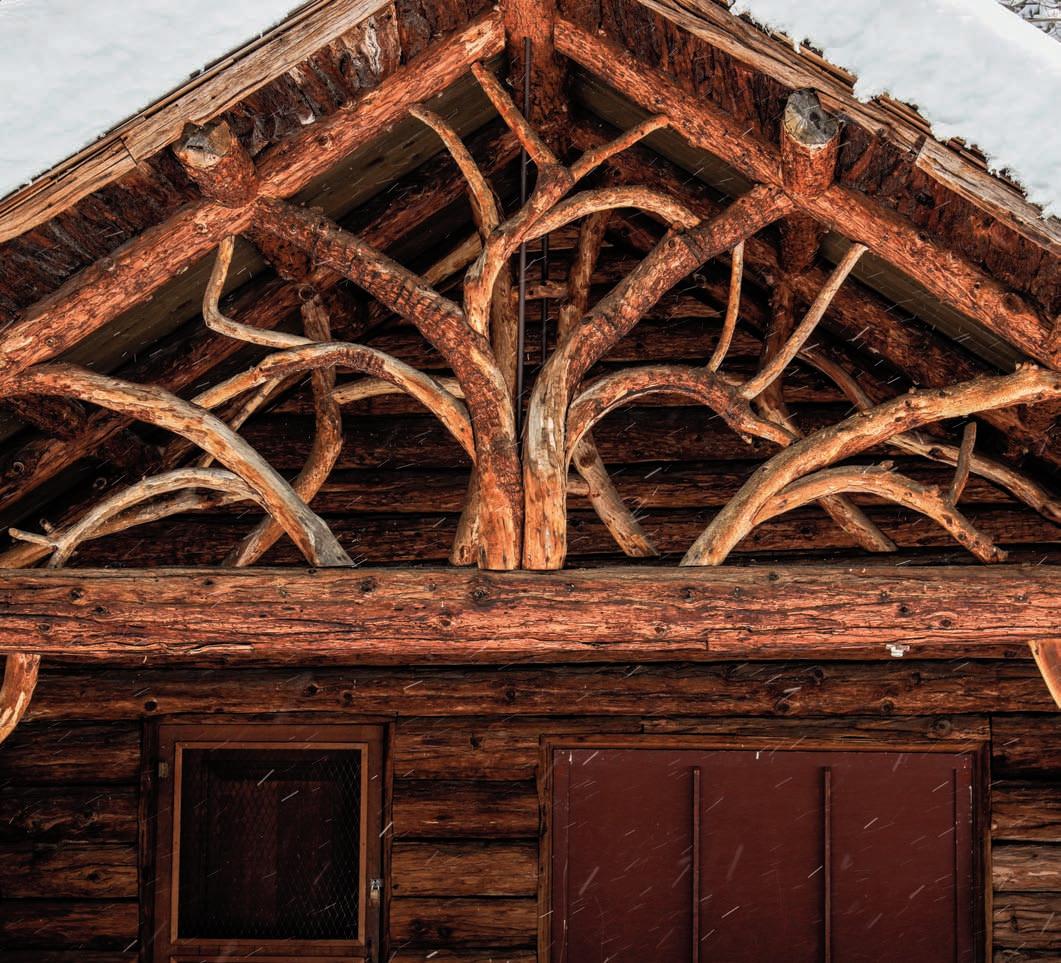
Lake Tahoe—An Exercise in Duality
Washington, D.C.— Indoors and Outdoors
Valencia—Delight on
Spain’s Mediterranean Coast Keen Visitor Tours Across the Country






Lake Tahoe—An Exercise in Duality
Washington, D.C.— Indoors and Outdoors
Valencia—Delight on
Spain’s Mediterranean Coast Keen Visitor Tours Across the Country




Dear Members,
As winter looms before us we would do well to consider the season’s bright spots! We can look forward to any of several holidays that bring family and friends together; crisp, clear night skies awash with stars and the Milky Way; fresh fallen snow that turns an ordinary neighborhood into a pristine wonderland; cooler southern days that invite all manner of outdoor activities (avoided in the hot summer); and a travel benefit that has been touted in these pages before—the opportunity to visit popular places, near or far, without the large crowds of tourists that have been making news of late. Yes, the summer months may be a good travel time for some, but if you want a more personal experience at your travel destinations, whether a big theme park, a national park, or old-world castles and museums, winter is a great time to go.
This issue of ODYSSEY takes readers around the country as we look at some of the best visitor tours on offer by companies you’ll recognize, as well as some tours of facilities that have historical or cultural significance. We’ll step back in history for a visit to George Washington’s Mount Vernon estate and make a visit to Silicon Valley, where at least some of the products of our future are being crafted right now—with many stops in between.
Washington, D.C. is a destination everyone should experience at least once. As it is the seat of our nation’s government, the reasons are obvious. But capital status aside, the city offers an unmatched medley of museums, monuments, parks, and historical sites that educate and entertain. Nowadays, planning ahead and making online reservations are key to letting you see all that you want to see.
Nestled among the peaks of the Sierra Nevada, Lake Tahoe showcases just how many ways there are to enjoy the outdoors: hiking, biking, boating, skiing (of course) and other specialty activities like snowshoeing and snowmobiling… the list is long!
Across the Atlantic a visit to Valencia, Spain, and its offshore sidekick island Ibiza, will reveal them to be destinations that mix old-world charm with a social scene that caters to all ages—especially young folks, who flock to Ibiza’s festival-type music events and the latest offerings in the DJ scene at the famous clubs.
Wishing you safe, enjoyable travels,

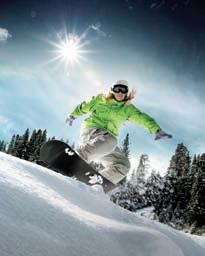
Patrick JO’Brien, President, Chevron Auto Club




There are two distinct Lake Tahoes. They exist in the same space but are separated by the seasons. There is Summer Lake Tahoe with its focus on the water and taking in the mountain air on jaunts in the woods, and there is the Winter Lake Tahoe, mostly about the snow—typically about twenty-five feet of it over the winter—and pretty darn good for skiing and other winter activities! By Peter van Schoorl


When it comes to time well spent, a visit to our nation’s capital will be at or near the top of the list. From the institutions that house our national government to the institution that is the Smithsonian, there is a cornucopia of indoor treasures to see. And outdoors there is a wide array of monuments, memorials, parks, and neighborhoods to experience.. By M. Maxwell Richardson
Coastal Valencia and the offshore Balearic island of Ibiza are both immersed in the rich ambiance of the Mediterranean. Valencia’s Old Town, laced with Moorish-era winding streets and alleyways, will captivate the romantic, while Ibiza’s resort culture will appeal to the traveler seeking island fun. ByElizabeth Martin
Ever wonder if George Washington made whiskey, or if Kohler still makes cast iron bathtubs, or where the copper that wired America came from? You might have if you are the really, really, curious sort. But curious or not, you will have fun and learn a lot by taking visitor tours. We present a few of the many that might catch your interest. ByCory Shelland Departments
14 Scenic Drives
16 Travel Bulletin
32 Travel Library
Post Office Box 830008, Miami, FL 33283-0008. ODYSSEY provides
these are revisedfrequently, and although believed to be
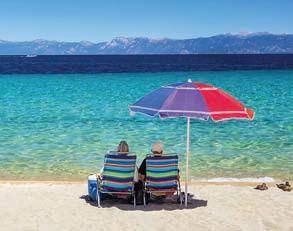












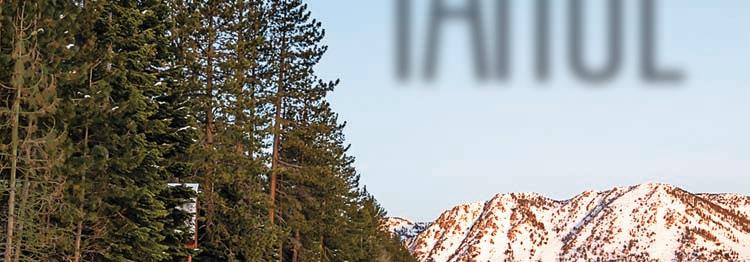
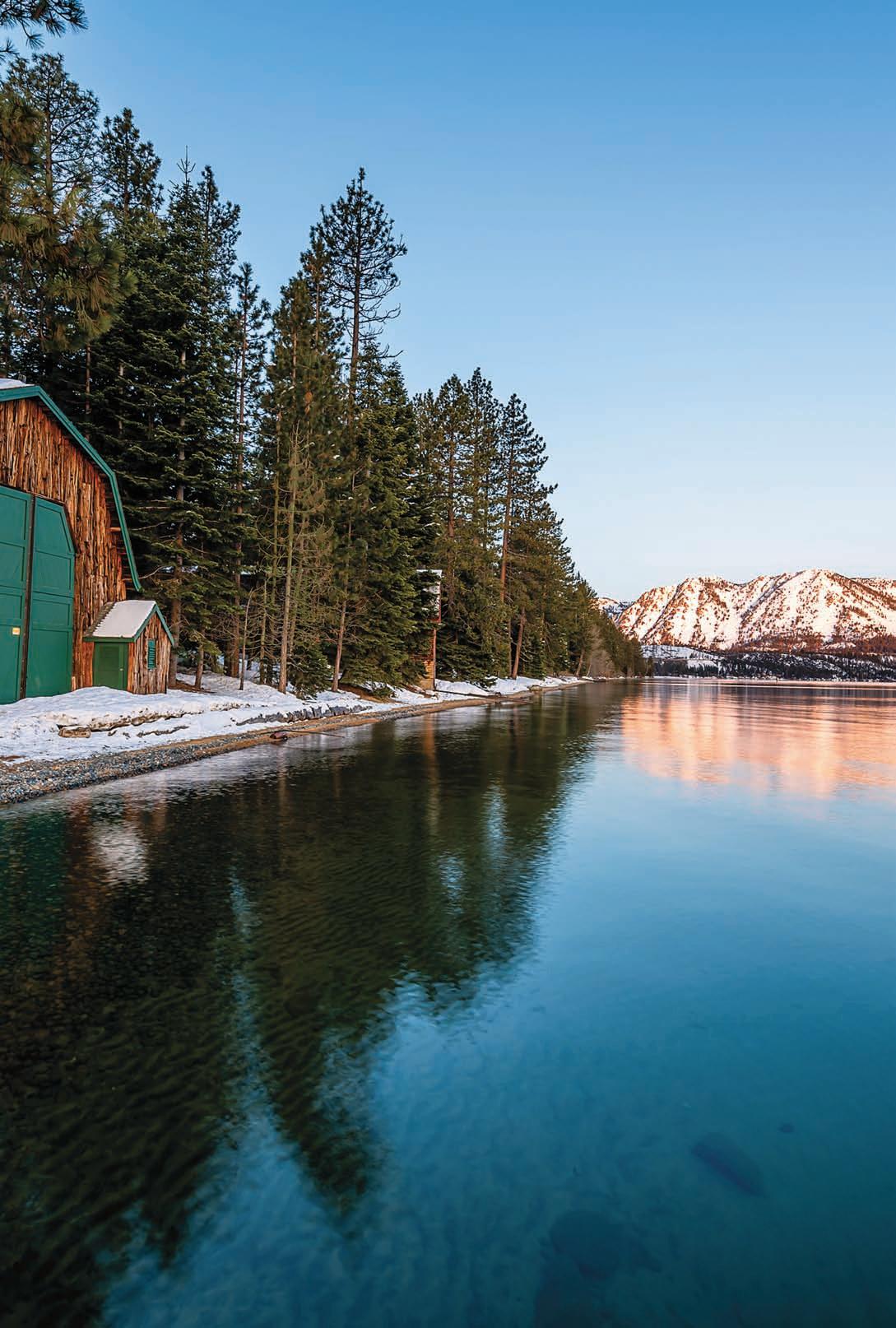

by Peter van Schoorl

















The Roman god Janus would have liked Lake Tahoe. Who wouldn’t, for that matter? But to the point, the mythological two-faced Janus was thought to reside at the limits of Earth and to famously be the god of“duality.”Think about it. The “limits of Earth” part fits, in that at an elevation of 6,225 feet, high in the Sierra Nevada, Lake Tahoe is closer to the limits of the Earth than most any other lake. And the “duality” part, well, there is lots about Tahoe that is two-sided. For instance, one side is in Nevada, the other in California. And the lake, situated within the pristine natural environs of the High Sierra, reclines peacefully in the lap of numerous grand mountain peaks—but alas, there is the other Tahoe, notably Stateline, Nevada, on the lake’s south shore, a lively casino town with lights, entertainment, dining, gambling, and just living it up. Then there are the seasons. The seasons really define Tahoe as two places: Winter Tahoe and Summer Tahoe. Very, very different, they are.
Splitting Tahoe yet another way, let us consider Tahoe’s past before moving on to Tahoe in the present tense. The Washoe tribal nation occupied the Tahoe area for the better part of ten thousand years before European-American explorers arrived. In fact “Tahoe“ is the English language version of the Washoe word meaning “waters” or “the lake.” It was at the center of the long-established tribal nation, both physically and culturally. Lieutenant John Frémont, in 1844, was the first non-Native American to see the lake, during an exploratory mission in which he was seeking a route west at a lower latitude than the already established
Morning sun illuminates the boathouse (left) of Valhalla on the Heller estate. The boathouse now serves as a community performing arts theater. A Roman coin (above) c. 220 BC features the head of Janus. Hidden Beach (above right) is a public beach in Nevada on Lake Tahoe’s northeast shore. The Heavenly Mountain Resort gondola provides views (right) of Lake Tahoe from the California-Nevada border at the lake’s south shore.

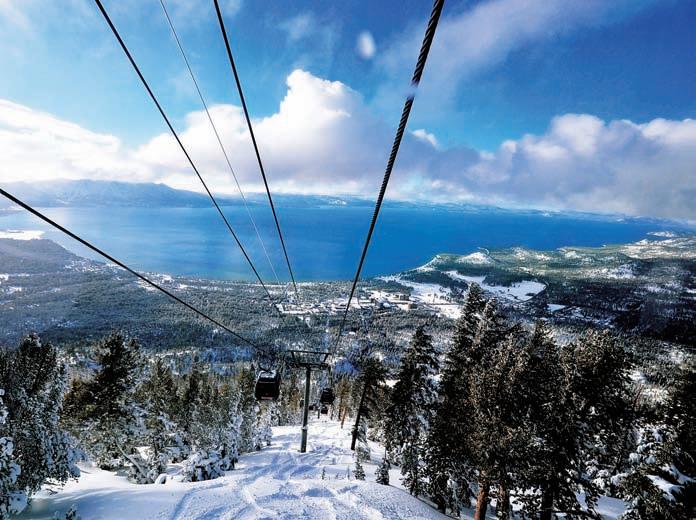
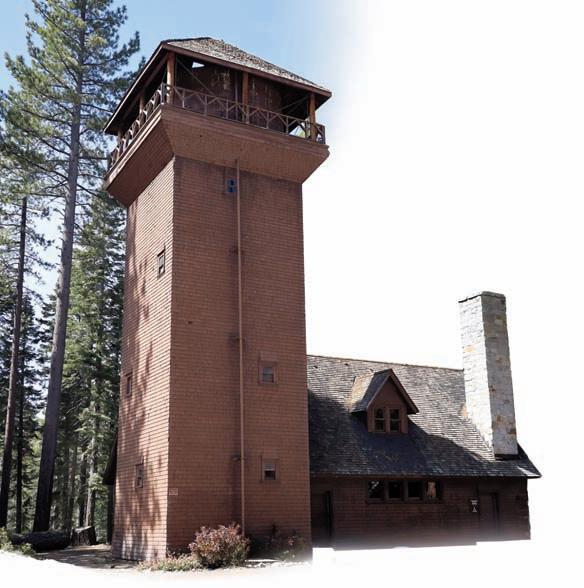
Oregon Trail. Making his way from east to west over the Sierra Nevada on what he named Carson Pass, he spotted Tahoe from his encampment at a smaller nearby lake. Several names attached to the much larger lake over the next century, in time winnowing down to Lake Bigler and Lake Tahoe. Mark Twain weighed in on the matter in newspaper articles and even in a book. He favored “Bigler.” But Governor Bigler, the person, was unpopular among some in the West and so, after a mere century of wrangling, “Tahoe,” the anglicized Washoe name for the lake, was officially adopted in 1945, as one might surmise it should have been from the beginning.
Presently, as it has been for millennia, Tahoe is an aquatic anomaly. With a length of 22 miles and a width of 12 miles at its widest, the lake is big enough to top the list of alpine lakes size-wise. It holds more water than every other natural U.S. lake, save for the Great ones. And it is deep. Though never confirmed, it is thought that at the bottom of the 1,645-foot deep lake objects, both inanimate and once living, are in a time capsule state. An almost perfectly preserved diver, recovered in 2011 after 17 years at a depth of only 300 feet, implies as much. This the result of a number of factors, one of which is the purity of the frigid water.
Concentrated efforts have been made in recent decades to preserve Lake Tahoe’s
A tower (above) rises at the Hellman Erman mansion in Tahoe’s Sugar Pine State Park.Vikingsholm (below) was built in 1929 as the lake residence of Lora J. Knight. It is now part of Emerald Bay State Park. Classic wooden power boats (right) are the stars of the Lake Tahoe Concours d'Elegance held each summer.
It was the discovery of gold in California and silver in Nevada that ended the Washoe era of the Tahoe region. Countless waves of prospectors and their associated supporters crossed the Washoe lands in the mid-nineteenth century, with some staying to occupy the livable valleys. The dwindling Washoe population that remained mostly worked on the ranches and farms of the settlers. A 1934 act of Congress, the Wheeler-Howard Act, however, granted recognition and some rights back to Native American tribes including the Washoe of Nevada and California. And in 2002 the tribe was granted cultural rights to the land surrounding Lake Tahoe.
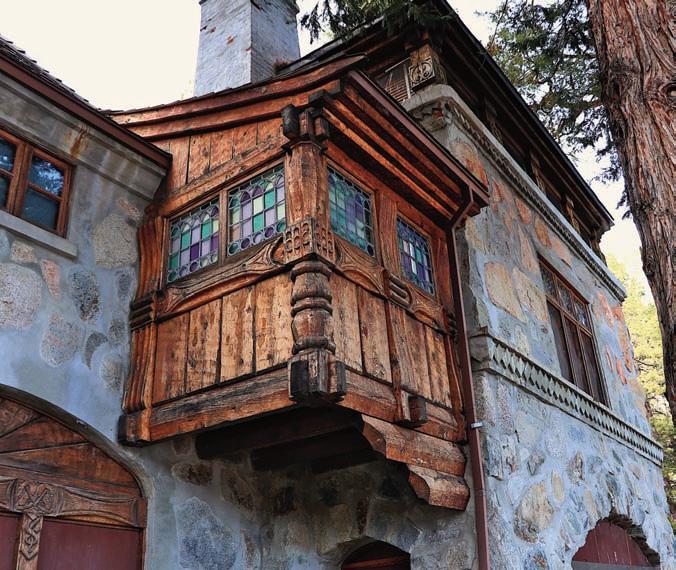

renowned water quality. Some degradation is natural, but some is controllable. Older twostroke boat motors were banned in 2001 and measures have been taken to eliminate nonnative aquatic organisms. The measured clarity of the lake water, currently at about 75 feet— a bit less in summer, greater in winter—has, as a result, been improving for four decades now.
Not long after Frémont mapped the lake in 1844, word of its natural beauty got out. In 1863, a town was plotted on the north shore at the lake’s outflow, a stream that forms the Reno-bound Truckee River. The 84-room Tahoe House Hotel rose on the site. Rail service from Sacramento to Truckee, 15 miles from the lake, was completed by 1867, with rails extending all the way to Reno by June of 1868. Stage coaches operating between Truckee and Tahoe City on the north shore opened the lake to tourists and vacationers from both Northern California and Nevada. By the 1870s, wealthy individuals and families, mostly from the booming Bay Area and
Comstock towns of Nevada, began to vacation at the lake, some of them building lavish resort homes. Today a few of the lavish homes, such as Vikingsholm (at Emerald Bay), the Pope, Baldwin, and Heller properties at the Tallac Historic Site (on the south shore), and the Hellman-Ehrman Mansion (on the west shore) remain and are open to the public. Thunderbird Lodge on the lake’s east shore is perhaps the most fascinating of the historical properties. Touring these over-the-top “rustic” homes is but one fun warm-weather activity Tahoe visitors can pursue. Spring and fall are ideal for outdoor activities, with daytime temps in the mid-to-high 60s. The summer seasonal faceofTahoe shows itself around May, when daytime temps approach the July-August highs of around 80°F.
Besides soaking in the scenery and touring the preserved estates, other land-based summer activities include hiking and biking for the exercise-inclined crowd. What better place to get some fresh mountain air and top-drawer views while logging a few miles! Trails originate at several points around the lake. Two of the top trails are the Eagle Lake Trail and the Rubicon Trail, both in the lake’s southwest Emerald Bay vicinity. Note that the Rubicon (hiking) Trail along the Tahoe shoreline is not the famously challenging “Rubicon” Jeep trail that originates in the California gold country hamlet of Georgetown and terminates at Tahoma on Lake Tahoe’s west shore. For hikers and backpackers the crown jewel of footpaths is the Tahoe Rim Trail, referred to locally as the TRT, an abbreviation that does not reflect the fact that the TRT is a 165-mile loop around the lake—replete with altitude, one stunning panoramic view after another, and sections that include the Pacific Crest Trail. You can hike segments as day hikes or hoist on your kitted-out backpack for a multi-day experience.
Mountain biking is big at Tahoe. Many sections of the aforementioned TRT are MTB accessible and eminently rideable, though don’t expect to ride the whole trail. Details are included on the TRT website at tahoerimtrail.org/mountain-biking. If downhill mountain biking is your thing, know that ski lifts operate winter and summer at Tahoe! Pack your bike and full helmet and head for Northstar, where you’ll find 3-4 lifts operating. BorealWoodward offers chair lift downhill plus a skatepark and other activities in summer. Both parks have regular MTB trails as well, in
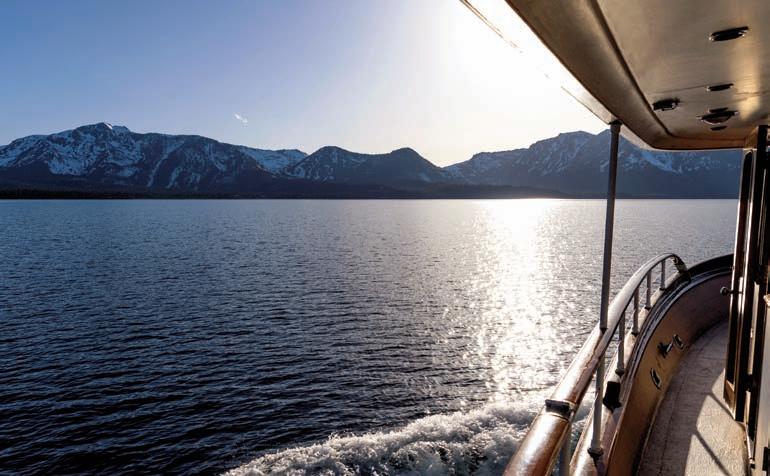
addition to the numerous public MTB trails in the Tahoe area. A fine selection of trails is listed at www.mtbproject.com; search “Lake Tahoe” and select California or Nevada. The descriptive trail entries include the elevation profile and degree of technical difficulty for each trail.
For most people, summer at Lake Tahoe is all about the water! Public beaches dot the 72-mile shoreline, many with free parking and picnic facilities. As for boating, there are plenty of private boats at Tahoe, some moored, many trailered. But whether you arrive with your own boat or not, it’s easy to get yourself and your crew out on the water with a rental. From cruising to relaxing on a pontoon boat, to water skiing,wake boarding, or jet skiing—all are on the menu. And that’s just power boating. Consider also that sailing, canoeing, kayaking, and paddle boarding are top choices as well. Bring your own
biking (below) is a popular activity at Lake Tahoe. Emerald Bay (below) is viewed from one of the several trails that provide for great photo ops.


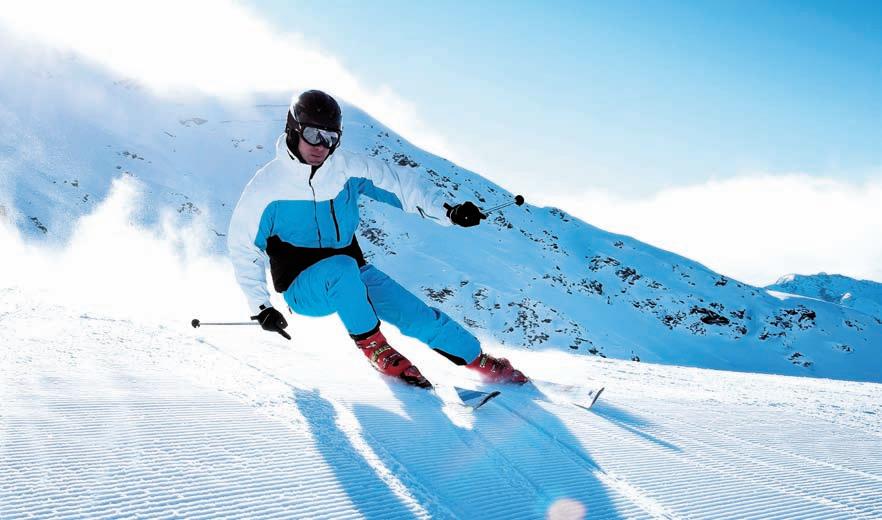
Abundant snowfall and great weather make Tahoe a prime winter recreation destination. The skier (above) carves a nicely groomed slope. The serenity of the Tahoe mountain setting is best experienced on a snowshoe (below) or cross-country ski trek.
or arrange for a rental. Watercraft rental facilities are located at the towns along Tahoe’s shore, with the majority of power boat rentals at the south shore. Reserve a boat at a boat rental outfit or rent one through your hotel. Non-motorized watercraft are available more widely around the lake, as there are plenty of shoreline spots to explore and enjoy.
The Lake Tahoe Concours d’Elegance claims to be North America’s premier wooden boat show. The home of the show is at the Obexer’s Boat Company on the west shore, a facility that, with a legacy that traces back to 1911, complements the vaunted watercraft

displayed there. The annual event confirms that many varnished mahogany masterpieces have found a happy home at Tahoe. In many ways, vintage wooden boats, maintained or restored to perfection, are a Tahoe thing.
Boat Tahoe in any season if you will, as the lake never freezes over. There is too much water volume at depth for the atmosphere to cool the water, as it upwells just enough. That is not to say that it wouldn’t be brisk out on the water from December through March— the air temp averages just 40° F on winter days with nights around 20° F. But if that is a bit chilly for boating, it is just about perfect for—skiing.
Skiing in California started in the 1850s as miners in the gold country town of La Porte took up skiing to help get them through the snowy winter months. It took until 1928 for skiing to arrive at Lake Tahoe in the form of a ski jump, with a rope tow, “sponsored” by the Tahoe Tavern and built by Lars Haugen. Olympic-bound skiers trained at the facility that stood until it was abandoned in 1951, having been replaced by resort-style ski facilities that provided lodging, dining, and downhill skiing using chair lifts. The first of these was the Tyrolean-inspired development at Sugar Bowl, popular in its early years with the Hollywood set. The 1932 Winter Olympics held at Lake Placid, New York, were for many Americans their first exposure to skiing. WWII was a quiet period for Sierra skiing, but exposed many American soldiers to the mostly European winter sport and many returned looking for places to ski at home. The number of ski resorts expanded to meet the need, and the Tahoe basin was, and
still is, host to a number of them, further aided by the fact that the 1960 Winter Olympics were held at the recently renamed Palisades Tahoe.
Our Roman god Janus might appreciate that Tahoe offers both wintertime fun and relatively warm weather simultaneously—if you consider that even in winter daily temps are around 40°F and above—thus giving birth to the term warm-weather skiing. Unlike skiers in Colorado who send plumes of powder into the air on every turn, California skiers and snowboarders enjoy a different experience. Yes, Tahoe gets its share of powder, but you have to time it just right if you want to partake. Normally the Tahoe downhill experience is on “groomed” slopes, that is, slopes that are raked overnight as the air temperature dips below freezing, leaving a pristine, agreeably textured
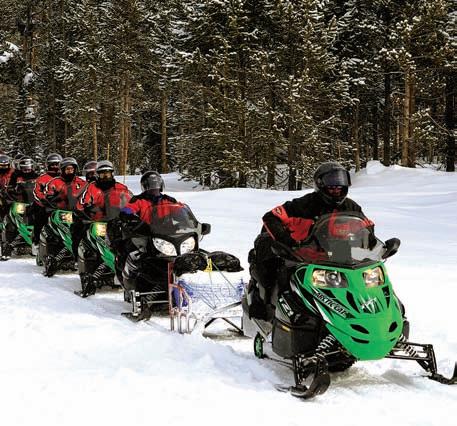
surface that is fast in the morning and a bit slower in the afternoon as the snow moistens and heavies up a bit.
Sore quads? When too much downhill blows up your quads, consider enjoying Tahoe sitting down—on a snowmobile! Join a tour of Tahoe backcountry with a group on a snowmobile tour. Tours operate from both north and south lake locations and although not the ultimate in peace and quiet while they are moving, the machines will get you to places that deliver the grandeur of the Tahoe Basin to you like no other winter experience can. Back to skiing, but the (generally) flatland type, aka cross-country, XC, or Nordic, and now skate-skiing. Thousands of acres of Tahoe’s alpine setting are dedicated exclusively to cross-country skiing and snowshoe hiking.
Enjoy ultimate peace and quiet at any of Tahoe’s XC facilities such as Tahoe Donner XC Ski Center (off I-80 before the Tahoe turnoff) and Tahoe XC at Dollar Creek. Royal Gorge Cross Country Ski Resort offers accommodations, as does the large Kirkwood Ski Village for those XCers wanting a multi-day experience.
You don’t ski? Tahoe offers plenty more possibilities to wintertime visitors, both on and off the snow. Or how about above the snow—there are two aerial tramways that are fun to ride. One is at Heavenly/South Lake Tahoe, the other is at Palisades Tahoe and features food and activities at the top along with, significantly, the Washoe Display that presents Washoe history and artifacts. While at Palisades, visit the Olympic Museum as well.
Lake Tahoe is a world-class vacation destination. Whatever activity you chooseto fill your days (and nights!), know that Tahoe has accommodations at every level from camping to motel to luxury resort, and even cozy cottages— with dining possibilities to match. Enjoy Tahoe in summer or winter.
A snowmobile tour (left) can get you to places that provide some of the most spectacular views of a winter Lake Tahoe. If you include skating on your Tahoe agenda, know that Northstar Resort (below) is one of several places with a rink.
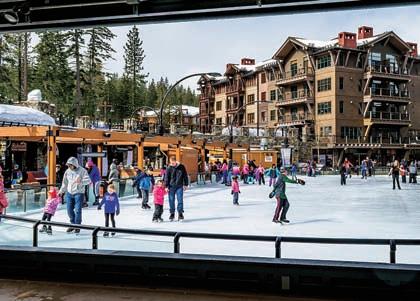
The Lake Tahoe area comprises many square miles of lake, shore, towns, surrounding forest land, and snow-covered mountain expanses. This huge recreational paradise has, not surprisingly, a well-developed framework of visitor resources— from accommodations, to dining, to parks for hiking, biking, skiing, and more. And there is, of course, the lake. The resources are well-presented in any of several Tahoerelated websites that will allow you to plan a visit. Listed here are a few. Note that these are “.com” sites and freely include commercial interests among the excellent information they provide. General information is provided by https://visitlaketahoe.com. On this south-lake-based website you’ll see tabs for accommodations, dining, events, and things-to-do—a category that is further divided by seasons, with subcategories for all manner of activities
from renting a boat, to the best hiking trails, to scuba diving. Hundreds of possibilities are listed, making this a smorgasbord of Tahoe choices.
North Lake Tahoe receives an emphasis in the otherwise general Tahoe website www.gotahoenorth.com. Similar to the site listed above, this nicely designed site presents hundreds of possible choices for a trip to Tahoe, be it long or short. It too has headings for Spring, Summer, Fall, and Winter, allowing you to focus your search(es) according to the time of year you plan to visit.
The Concours d'Elegance is a major annual Tahoe event. The pampered wooden powerboats on display transport visitors, figuratively in most cases, back to a bygone era. The well-known Chris-Craft marque accounts for only about half the entries. The website for the show is https://laketahoeconcours.com.

by M. Maxwell

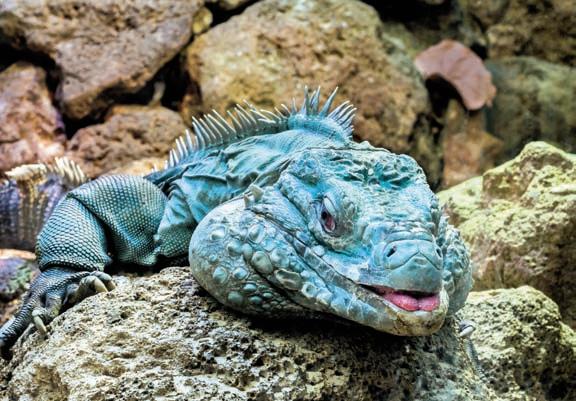

James Macie had a huge impact on D.C. Who, you may ask, was James Macie?Well, James was born in 1765 in Paris. His mother was Elizabeth H.K. Macie, a Briton. His father, Hugh Smithson, was the Duke of Northumberland in England. Growing up as James Macie, he attended Oxford where he studied chemistry and mineralogy. Upon his mother’s death in 1800, James adopted his father’s surname. As a successful scientist of the day, he was named a fellow of the Royal Society of London, writing 27 papers, and having a mineral (Smithsonite) named for him. James died in 1829, with no children of his own,
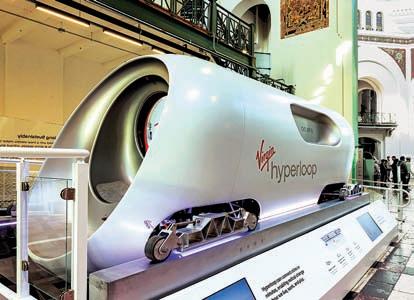


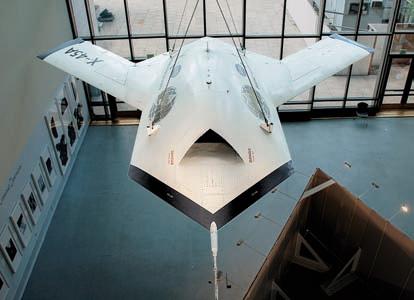
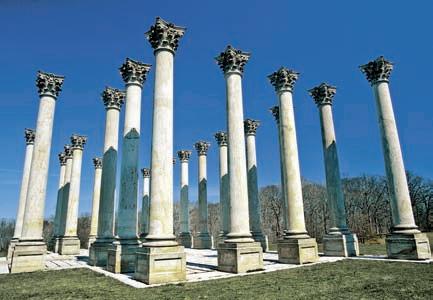
but with half of his mother’s family fortune. His will stipulated that the fortune, in the absence of ultimate successors, was to go to the United States of America to be used to found at Washington “. . . an Establishment for the increase and diffusion of knowledge...” under the name “Smithsonian Institution.” James Smithson died in Italy, having never set foot in America. The Smithsonian Institution in its 178 years has aided in solving countless mysteries, but James’s bequeath to the United States remains a mystery unsolved, as he never revealed the reason behind his wish.
Among the many serious scientific concerns addressed by James Smithson, one stands out as not quite so serious. He wrote a paper describing a better way to make coffee. High science? Not really, for the method he described was a simple stovetop procedure similar to that used for the French press. Coffee drinkers can appreciate that—but all the U.S. citizenry can appreciate the effect James’s greater gift has had on our culture.
The c. 1855 Smithsonian Castle (opposite) is on the National Mall in D.C. A Grand Cayman blue iguana (opposite lower) suns at the National Zoo. Above from left:a Virgin Hyperloop vehicle on display at the Smithsonian Art+Industries Building; a Boeing X-45 autonomous aircraft hangs in the Air+Space Museum; columns reach skyward at the National Arboretum; an African elephant (right) is prominently displayed at the Museum of Natural History.

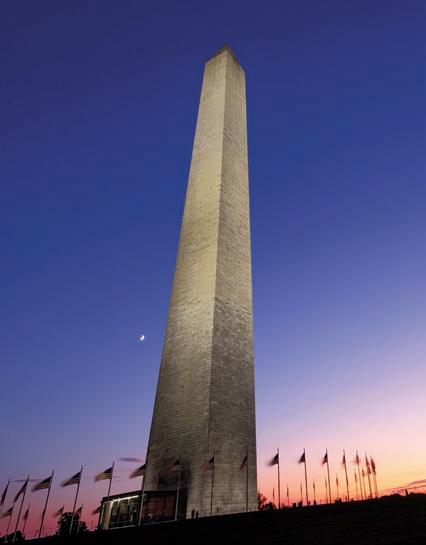
Lights shine on the Washington Monument (above) as the sun sets.An installation (below) at the Renwick Gallery features designed lighting of suspended diaphanous fabric. The International Spy Museum (bottom) moved to its new building in 2019.
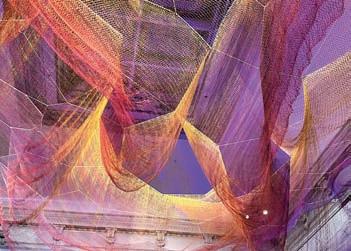
The Smithsonian Institution presently comprises 21 museums, over 200 affiliate museums across the country, and numerous research and educational programs. Seventeen of the museums are in Washington, D.C., including the Castle, the institution’s original, and still used, edifice on the National Mall. The museums exhibit some of the over 150M items collected over the decades—some tiny and some of grand scale, such as the aircraft at one of the most popular of the Smithsonian museums, the Air & Space Museum. At the behest of John Quincy Adams, James Smithson’s remains were transferred from Italy to Washington and interred at the Castle on the Mall, and that, as the visitors center, is the best place to design your tour of the Smithsonian museums, including the zoo. Hitting every museum entails a 2.5-mile walk (not counting the steps taken inside each museum), so it is clearly best to pick and choose. Dinosaur skeletons? It’s the Museum of Natural History. A beautiful Congolese wooden mask? It’s the Museum of African Art. Stamps? Elephants? Cubist masters? Native American headdresses? There is a museum for each. The array of Smithsonian museums can keep a visitor to D.C. occupied for a week, but of course, there is much more to see in and around the capital.
Before departing the National Mall, consider that there are several federal buildings you might want to visit. Touring the U.S.
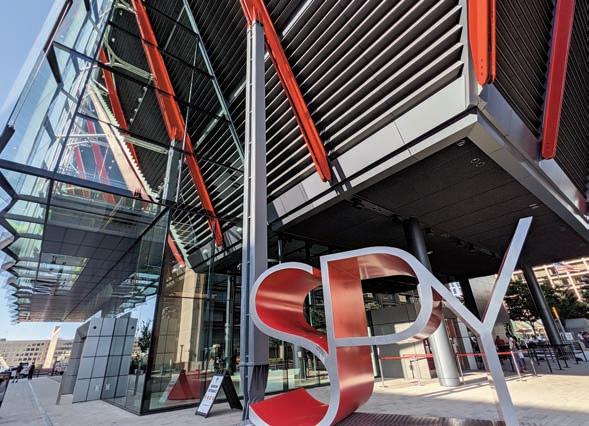
Capitol, the White House, and the National Archives is free, but reservations are required. Advanced reservations are preferred but sameday tours are possible. Security screening is, of course, required. The monuments around the National Mall, such as the Lincoln Memorial, the new Eisenhower Memorial, the Jefferson Memorial, and the four “rooms” of the Franklin D. Roosevelt Memorial, are open to visitors approaching on foot. The Washington Monument “elevator” experience is unusual, both for the panoramic view from the top and for the fact that there are several ways to get tickets. Advanced reservations can be made online up to 30 days in advance. A number of “next day” tickets become available online each day at 10 a.m.. And finally, a limited number of “same-day” tickets is available on the monument grounds at 8:45 each morning; first come, first served.
The National Mall and its attractive selection of governmental, scientific, and cultural institutions and memorials can fill a weeklong stay with wonder and appreciation—but there’s more. Some of D.C.’s more unique and contemporary attractions are off the mall and definitely worth the investment of some tour time. Take for instance the International Spy Museum. This popular establishment has moved from its former location to a brand new, ultra-modern building with several floors of exhibits. Everything from the history of spying, to James Bond’s appliances, to the latest advanced surveillance techniques is covered. As with many of D.C.’s attractions you’ll want to plan ahead and get tickets online before you go.
Be surprised by the Renwick Gallery, one of the Smithsonian establishments. The historic building does not exactly reflect the exhibits inside, mostly comprising contemporarycraft and art. Unusual tables, exotic garments, art installations incorporating light and sound, and an odd assortment of sculpture and craft items capture the imagination and make for a varied and interesting art experience.
Rain won’t matter too much as you continue to explore D.C’s indoor spaces. Our next suggestions are located in the Federal Triangle—a ten-acre tract of 192030s-era federal buildings adjacent to the National Mall replacing a once-rough neighborhood. The tall gray buildings, now with historical site status, mostly house federal agencies. Near the east “point” of the hive of buildings is the National Archives, where the
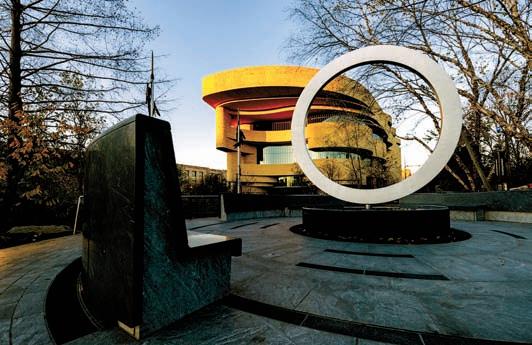
nation’s founding documents are on display— a must-visit destination in a D.C. trip. And if you have little ones in tow be sure to include a stop into the National Children’s Museum. A colorful awning amid the serious façades greets families at the 50-year-old establishment in the western section of the Federal Triangle. The engaging exhibits focusing on elemental science, technology, art, and additional otherwise adult concerns are geared to letting kids up to the age of 12 have fun while learning.
Enshrined on Mount Rushmore, Theodore Roosevelt’s presence in D.C. is significant, but not perhaps as obvious as that of the presidents memorialized around the National Mall. In recognizing TR’s concern for preserving tracts of land in their natural state for future generations—and giving birth to the National Park system—Mason’s Island, in the Potomac adjacent to Georgetown, was purchased by the federal government in 1931 with the intent of creating a memorial to the outdoorsman and conservationist 26th president. Work by the Civilian Conservation Corps was begun to clear former structures and recreate the island’s once natural environment. Renamed Theodore Roosevelt Island, a memorial plaza with a statue of TR was dedicated in 1967 and is the focal point of the island’s miles of trails through woods and across marshland. Access is via a footbridge from the Virginia side of the Potomac.
The most traditional of D.C.’s outdoor experiences is the viewing of the cherry blossoms around the Tidal Basin. The timing of the 2-week blossom extravaganza varies, but on average is centered around April 4th. A 1912 gift from Japan, the trees, with their extraordinary blossom show, are the centerpiece of the annual Cherry Blossom Festival. Hike the perimeter of the Tidal Basin on the

Perimeter Loop Trail, a 2.1-mile amble past the Jefferson, the Franklin Delano Roosevelt, and the Martin Luther King, Jr. memorials.
The Smithsonian’s National Zoo & Conservation Biology Institute, better known as the National Zoo, is located at the southern tip of Rock Creek Park, about 2 miles north of the White House. Exit the Metro at Woodley Park/Zoo. The one-time chief taxidermist for the Smithsonian, William T. Hornaday, had by1887 brought15 species of live animals to the Smithsonian Castle to use for reference in doing his museum work. The animals, kept behind the building, drew the attention of visitors and locals. Hornaday’s concern for the preservation of declining animal species and the idea of putting the reference animals on formal display were the seeds for the National Zoo, which opened in 1891 at its Rock Creek Park location. Greater Rock Creek Park serves Washingtonians and visitors alike
A memorial to Native American veterans (above left) fronts the National Museum of the American Indian. A green heron (below) surveys the waters at Kenilworth Aquatic Garden. A centuries-old Japanese lantern (bottom) rests among the cherry blossoms to the north of the Tidal Basin.











Give your family added coverage with this optional insurance plan, at an additional cost. Provided for Chevron Auto Club Members.



• Benefits are paid directly to you – regardless of any other insurance you may have.
• No health questions asked or medical examinations required.







• Coverage is available to you and your eligible dependents, as a Chevron Auto Club Member in good standing.







A blooming lotus is the subject of interest to a photographer at Kenilworth Park and Aquatic Garden, located across the Anacostia River from the National Arboretum.
with recreational opportunities that go beyond the zoo. The park’s 1,754 acres of woodland flanking Rock Creek are laced with trails that provide both peace and quiet and a chance to explore nature. The nation’s third national park is also home to a nature center and planetarium, a number of historical and archeological sites, and facilities for golf, tennis, kayaking, horseback riding, and just plain picnicking.
The National Arboretum, though the name may suggest otherwise, is about more than just trees. Among the ten “collections” is the National Herb Garden that showcases a variety of plants from roses to lavender to shrubs planted in an Elizabethan pattern. Azaleas are a

main attraction at the arboretum, thanks to the work of Benjamin Morrison, for whom the azalea gardens on the slopes of Mt. Hamilton are named. The annual display of color at the azalea garden rivals the cherry blossom event. Other “must sees” at the arboretum are the grove of 50 trees that represent each of the states. The National Capitol columns and reflecting pool sit regally atop a treeless rise that accentuates their skyward reach.
Just across the Anacostia River, east of the National Arboretum, lie the 700 acres of the Kenilworth Park and Aquatic Gardens, another important D.C. garden space to consider visiting. Kenilworth is the only National Park Service facility devoted to aquatic flora and the attendant fauna. Water lilies and lotus plants are stars at Kenilworth. Birdwatchers view as many of the 65 local bird species as possible and hikers enjoy the sounds and sightings of the numerous amphibians, reptiles, and mammals that populate the peaceful wetland.
If the aim of Kenilworth Park is to be as naturally wild, woolly, and wet as possible, the Tudor Place and Dumbarton Oaks properties to the west stand in stark contrast. Both of these historic Georgetown residences feature
prominently in D.C.’s residential history. Historic Tudor Place is open to the public, maintaining collections of George Washington family heirlooms plus period furnishings, jewelry, paintings, military items, and more. The gardens are the product of 178 years of care and concern by the Peters family, who built the residence in 1805. Just north of Tudor Place lie the 18 acres of Dumbarton Oaks. An elegant museum on the grounds displays Byzantine and Pre-Columbian art and is surrounded by elaborate gardens that feature contemporary sculptural art pieces, and host lectures and musical performances. Visiting these two Georgetown properties is a perfect gateway to an evening spent in the lively Georgetown district, the original community at what is now the District of Columbia.
Whether at the end of a long day of museum-going or as a day off from the D.C. experience, some time shopping, dining, and/or relaxing with a beverage, may be in order in the Georgetown Historic District. Predating the formation of the District of Columbia by some forty years, well-preserved Georgetown is rich with history. Designer shops abound, and scores of dining establishments, gastro pubs, and coffee cafés make Georgetown a great place to land. Take a stroll down M Street NW for all the action. Turn south on Wisconsin Avenue to Blues Alley on your left, home to the legendary club of the same name.
Just outside of D.C. proper, Alexandria’s Old Town is a convenient Metro ride from D.C. (take the Metro Yellow Line south, exit at King Street). From the Metro stop, Old Town Alexandria is a leisurely walk east on King Street, taking you past dining, and drinking establishments and boutique shops. Nearing the river at the end of the street, the historic Gadsby’s Tavern, a favorite of George Washington, is a block north on Royal Street. Now a restaurant with an adjacent museum, the establishment hosted such other notables as Thomas Jefferson, John Adams, James Madison, and James Monroe.
The question is this: Just how many trips to D.C. are necessary to cover all the significant sights and activities? Answer: somewhere between more than one and you could just move there.

Washington, D.C., https://washington.org.
Smithsonian Institution, https://www.si.edu/ and https://washington.org/smithsonian-institution-museums. U.S. Capitol Tour, https://www.visitthecapitol.gov/visit/book-a-tour.
White House Tour, https://www.whitehouse.gov/visit and https://washington.org/dc-faqs-forvisitors/how-can-i-tour-white-house.
National Archives Tour, https://visit.archives.gov/visit/tickets.
Washington Monument tickets, https://www.nps.gov/wamo/planyourvisit/fees.htm.
International Spy Museum, https://www.spymuseum.org.
Renwick Gallery, https://americanart.si.edu/visit/renwick.
National Children’s Museum, https://nationalchildrensmuseum.org.
Theodore Roosevelt Island, https://www.nps.gov/this.
Cherry Blossom forecast, https://cherryblossomwatch.com/peak-bloom-forecast. National Zoo, https://nationalzoo.si.edu/visit.
Rock Creek Park, https://www.nps.gov/rocr.
National Arboretum, https://www.usna.usda.gov.
Kenilworth Park and Aquatic Gardens, https://www.nps.gov/keaq/ Georgetown, https://washington.org/ dc-neighborhoods. Alexandria, Virginia, www.alexandria.gov/museums.
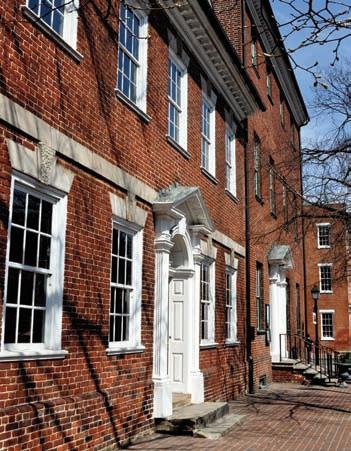
King Street in Alexandria, Virginia (top), has much to offer in the way of food and drink and shopping. Historic Gadsby’s Tavern (above), in Alexandria, was a favorite of the founding fathers, including George Washington. A museum is in the foreground; the tavern, now a restaurant, is beyond.

After a visit to the International Tennis Hall of Fame on Aquidneck Island, head south on Bellevue Avenue, or Thames Street, to the southern tip of the island and Ocean Drive (aka Ten-Mile Drive). Plan on making many stops to take in the views, and see the famous Gilded Age-era summer homes that line the coast. The


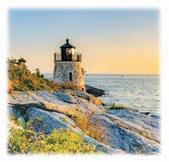



Marble House, and other mansions, have been preserved and are now open to the public, with signage and docents explaining the history of the island and the wealthy families who summered there, including President Kennedy. The rocky shoreline, creating many inlets and coves, makes a picturesque contrast to the expansive ocean and bay views. Before you leave the area, take a short detour to visit Fort Adams State Park out on the point in the fascinating Narragansett Bay.
Called “The Road That Built The Nation,” Route 40 Scenic Byway traverses Maryland, leaving the city streets of Baltimore and meandering through rolling countryside, small cities, and quaint towns. The 170-mile historical route marks the privately funded section of road connecting Baltimore and the town of Cumberland, where city, state, federal, and private cooperation allowed the building of the first federally- funded commercial thoroughfare. Crossing five state lines, the project made it to Vandalia, Illinois before funding dried up, but it still became an important major connection to the “west.” The Maryland section follows the original trail traveled by wagons and horseback to Cumberland, and there is no shortage of historical sites and recreational activities along the way. View
well-preserved nineteenth-century architecture, shop at antique shops filled with Americana collectibles,


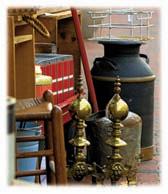



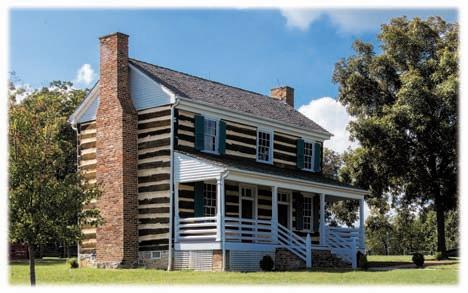



quench your thirst at historic taverns, and explore civil war history sites along the way. The towns of Hagerstown and Cumberland were early commercial hubs utilizing all means of transport including canals, bridges, railroads, and byways. The Historic National Road, or Cumberland Road, is the predecessor to the Lincoln Highway, and remains historically relevant today.
The Grand Island to Alliance byway is a 272-mile route on Highway 2 that winds through gently rolling hills, historic towns, expansive ranches and farmland, and the unique sandhill land formations. The Sandhills area encompasses a staggering thirteen million acres of stabilized grass-





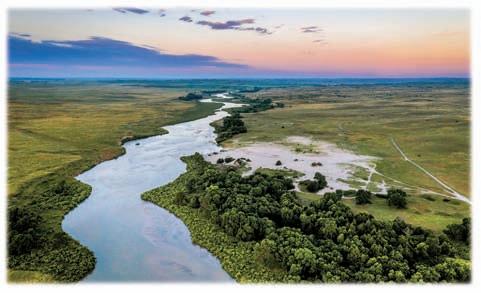
Taking a scenic drive is a great way to see our vast country one road at a time. There is an abundance of routes to choose from—something in every state. We’ve chosen a few for you to consider.The Scenic America website has a useful listing of designated scenic drives in every state at www.scenic.org > Explore Byways. paved road in the United States at such elevation, it means visitors via car can now experience what was once reserved for avid mountain hikers only.
covered sand dunes! It is also where you will see evidence of the giant Ogallala Aquifer as it breaks the surface amidst the Sandhills’ valleys—the underground aquifer stretches from Texas to South Dakota and creates countless lakes, marshlands, and wetlands along the byway. Time your trip to coincide with the annual spring migration of 600,000 Sandhill Cranes—a sight to behold. The Scenic Byway Visitor and Interpretive Center is located in Broken Bow, about one and a half hours west of Grand Island, and is a must-do stop along the route for detailed information of the area and events. As this trip encompasses remote areas with limited services, check the Sandhills Journey website for important travel information and download the Sandhill Journey app.



Crossing the Continental Divide, the 48-mile Trail Ridge Road starts in Estes Park, Colorado at the Fort River Entrance to

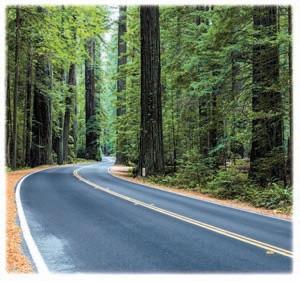
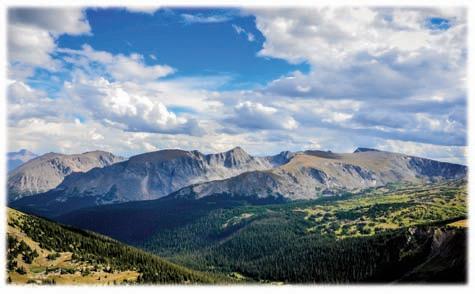
Rocky Mountain National Park and ends at the Grand Lake Entrance (or vice-versa). A historical route, the area was once used by the Arapahoe and Ute Native Americans to cross the mountains between their dwellings and hunting grounds in the east. This is strictly a seasonal road open only in summer, but that doesn’t mean there’s not plenty of snow to play in during the early summer season. The road traverses mountainto alpine life zones with a noticeable change in plants and wildlife, and is the only paved road to reach such heights, so this is a oneof-a-kind road trip. Reaching an elevation of 12,183 feet above sea level means, sadly, that not everyone can make this trip as health issues or acrophobia can prevent it. There are no fuel stops along the route but there is a visitor center as well as pull outs and adequate rest stops. As this is the only continuous

This 100- to 152-mile drive will take you from the most remote coastline in California to the often visited Avenue of the Giants redwoods, covering the extremes from isolated, wind-swept beaches to old-growth, 2,000-year-old redwood trees. There are also small towns comprised of colorful,Victorian architecture, and black-sand beaches inaccessibleto the masses. The Lost Coast drive and the Lost Coast Trail are on a multitude of top 10 lists for motorcyclists and hikers. This section of coast was considered by engineers to be too rugged for Hwy. 1, so it was bypassed and left with a minimal two-lane road that traces the coastline for seven miles before heading up into the trees. Heading south from Ferndale, you have a chance to continue south at Honeydew to the town of Shelter Cove, with blacksand beaches and vacation amenities, or head east on



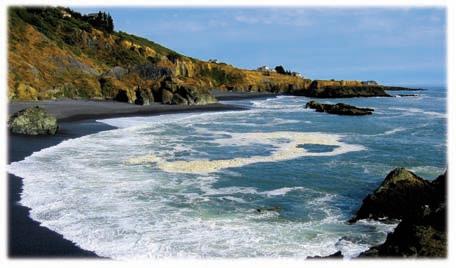



Mattole Road to the redwoods and Avenue of the Giants. Don’t miss the grove of “Candelabra Trees” (redwood trees that grow in an unusual candelabra-shape) along Mattole Road.
We love our dogs! Let’s keep them safe on car trips with their very own safety harnesses. Each padded, energy absorbing harness is CPS Certified for dogs. S, M, L, or XL sizing to fit your furry friend correctly. Sleepypod® Click-it Sport Plus. Approx. $110. at https://Sleepypod.com.



Trying to get to sleep while on a trip can be challenging and every little sleep hack can help. Inexpensive blue light blocking glasses may help relax your peepers and encourage melatonin production. No need for a prescription, these fit over eyeglasses. Sheen Kelly at Amazon. $15.
Spot MY UV® is a new visual aide that alerts you when it’s time to reapply sunscreen to make sure that you are covered throughout the day. Little purple dots are clear when you are good to go, and purple when it’s time to reapply. www.uvdetectionstickers.com.


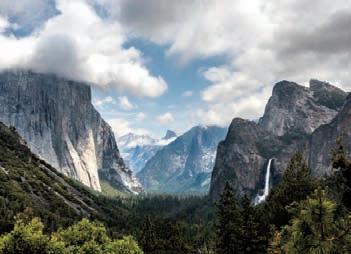

Cell phones can be slippery little devils. Neck and wrist lanyards will keep your phone from going overboard should it slip out of your hands while you are boating or near water, or just on a really high balcony. Lanyards can be conveniently detached when you don’t need one. In several colors from Saxsion at Amazon, approx $10.
The humble little reading light has been updated. Having a clip-on reading light can come in handy in so many low light situations–whether its the back seat of a car or your hotel room. Reading lights are now adjustable for both brightness and color temperature. Try the Anpro rechargeable from Walmart. Approx. $13.


Finally, gap fillers for car seats’ pit-ofdoom slot have arrived. You can choose the filled-and-blocked version, or the bucket-type filler that actually holds small items, like phones or sunglasses. Try the Drop Stop blocking version that fits snugly around your seat belt latch and is a universal fit for driver or passenger side. Approx. $25 for a pair. https://buydropstop.com.

The blessing and the curse of being so popular! To preserve and protect parkland, the park service will extend the timed entry reservation system through 2025. Currently, there are sections of notable national parks, along with some other areas, that will require advance notice of your attendance, including Acadia, Arches, Glacier, Haleakala, Mount Rainier, Rocky Mountain, Shenandoah, Yosemite, and Zion national parks. That being said, don’t forget to order your America the Beautiful annual pass: $20 seniors annual or $80 lifetime, free for military, $80 all others annually. Online at: www.nps.gov
D. LORETO / SMITHSONIAN
The “Earth Information Center” exhibit at the Smithsonian National Museum of Natural History, in collaboration with NASA, opened October 8, 2024. This 2,000-square-foot exhibit displays real-time research data collected via NASA’s equipment, creating high-resolution data visualizations accompanied by interactive portals, and video information displayed collectively on a “hyperwall, a 32-foot long curved display.” Learn how NASA and the Smithsonian scientists are studying our planet to secure our future on planet earth. From Oct. 8, 2024 until 2028.
Tired of dragging sand into the car after a picnic at the beach?

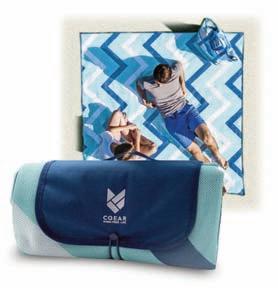
Specially designed beach mats will not hold sand in the fibers—shake it out and go. CGear’s sand-free ground pads, beach blankets, and equipment mats keep the dirt out once it’s time to pack it up. Sizes from 6'x6' to 12'x12', approx. $65 to $144. Online at www.cgear-sandfree.com
Not just for planes or trains, neck pillows come in handy in cars too. There are many styles to choose from, but find one that works well with your car’s headrest, whether it is the front passenger or back seat. Try the Trtl wrap-style neck support that is not bulky and is adjustable, left, right, or center, for your preferred head bob direction. Approx. $60. https://trtltravel.com

We’ve all heard about it, now it’s time to get one—the car safety hammer. This glow-in-thedark version comes with cone and flathead glassbreaking elements, seat belt cutter, and can be affixed to visor or car handholds. By Think Works at Amazon. Approx. $8.
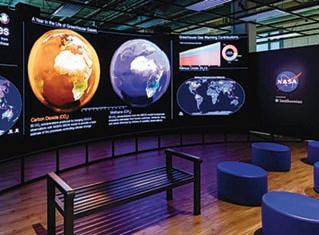

Get that mess organized! Lots of choices in this category, so look for waterproof material, variable configurations, and stability straps. One choice is the collapsible, multi-compartment trunk organizer by Drive Auto Products, with mesh side pockets. Approx. $30 at Target.
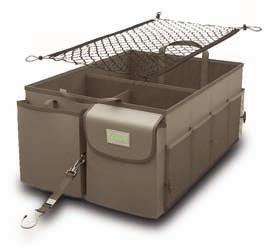
Identifier apps were all the craze a few years back, then they kind of melted. But the concept is making a comeback by branching out into more categories and using new technologies to get to the desired information.
The most prolific, and some of the earliest apps to take hold, were the plant identification apps using databases. Plant identifiers are still the majority of identifier apps out there, but a new approach has emerged, using your phone’s camera to interact with a visual search engine app. Veracity and Google Lens are visual search engineapps that tackle any subject, not just one.

Have all your car paperwork handy and easily found by doing something simple—get a wallet-style folder. Car insurance, registration, park passes, etc., fit neatly in one folder.
Choose a bright color to easily spot it in your glove compartment. Try the Toursuit holder in saddle at Amazon.
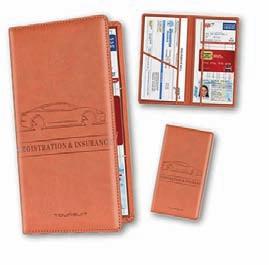
Approximately $10.




Leveraging AI and algorithms, these apps will get better and better over time. Also, Visual Lookup, using visual search, is built into the newer iPhones, no app needed.
In the meantime, you can download the two biggies, Veracity and Google Lens, but add the single-subject apps that fit your interests. Plants, rocks, art, animals, animal tracks, birds, bird calls, and dogs are apps that are pretty reliable using databases. Remember, the closer cropped the photo, the better for getting an accurate identification.
Some apps to consider: PictureThisAi: plants, AI driven PlantNet: geolocation added Stone ID: rock identifier Merlin Bird ID: image, sound Picture Bird: photo and sound Dog Scanner: dog breeds iTrack Wildlife:animal tracks Smartify: arts and culture Magnus: artwork identifier LandSnap: landmarks













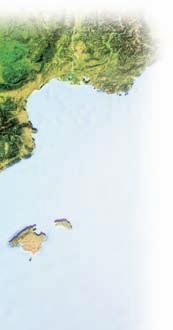


by Elizabeth Martin
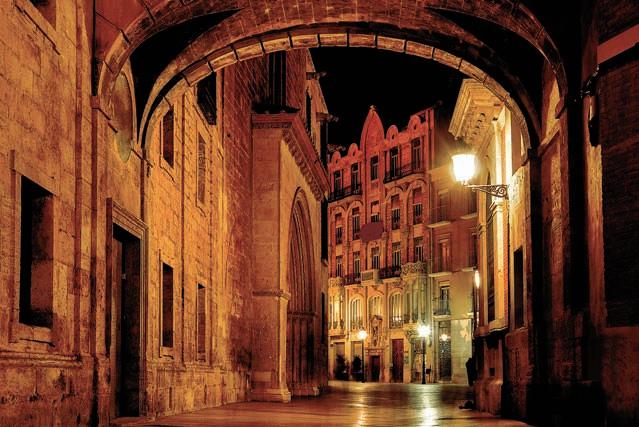
Old-world ambiance pervades the narrow, irregular streets (above) of Valencia’s city center.The tower of the c. 1200-1400 AD Valencia Cathedral rises in the foreground (above right). The cathedral is the centerpiece of old Valencia and displays a variety of architectural styles, from Gothic to Romanesque to Baroque.

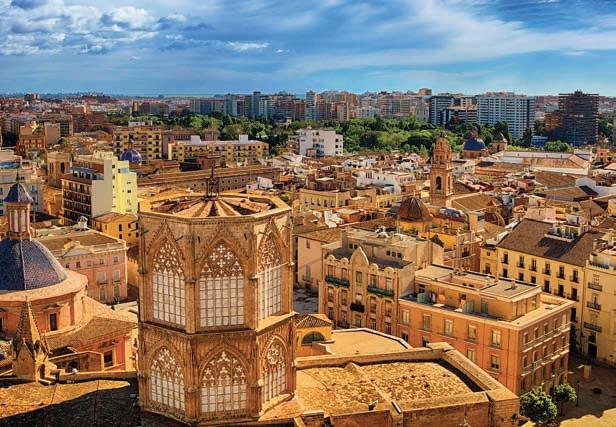


Don’t let the scenes of famous sites being overrun by tourists and headlines of unwelcoming locals throw you off your travel game. There are, and always will be, fantastic destinations around the globe that are welcoming and worthy of your precious vacation time and Instagram-worthy shots. Just two hours from Barcelona and Madrid lies Spain’s third-largest city, coastal Valencia. And, just offshore is the Balearic island of Ibiza, where you will find the legendary party scene of Ibiza Town.
Imbued with a Mediterranean climate, a colorful history, and sandy beaches, and surrounded by fertile agricultural land, Valencia makes a solid year-round destination. Its strategic port and farming potential meant the city was fought over by Phoenicians, Greeks, Romans, and Moors, who all left their marks evidenced in the art and architecture of the city—and the fight continued for



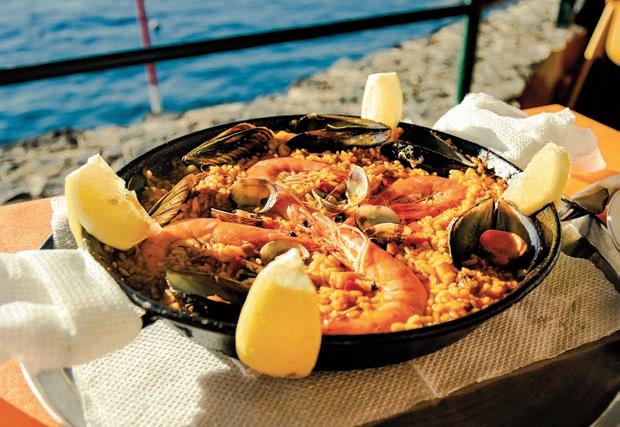

the island of Ibiza. While Ibiza conjures up thoughts of your favorite DJ and all- night parties, it too has an ancient history worth exploring.
A perennial favorite attraction for tourists who visit European cities is the city’s old quarter and markets—Valencia does not disappoint. The compact historic center is a fusion of architectural styles from the previous occupiers. The wall enclosing the city during medieval times was taken down in the late 1800s, but the streets of the historic Old Town, built during the Moors’ occupation, are a labyrinth of passageways lined with tiny shops and restaurants filling every nook and cranny of the centuries-old buildings. Beautiful motifs, rendered in colorful Venetian tiles, embellish archways and doorways.
Bring a compass, just for fun, and a good map and start your walk after visiting the main tourist information office at the southern point of Old Town
it’s roots to the sixteenth century in the countryside of Valencia.The "marisco" version replaces traditional rabbit and chicken with seafood. Ibiza may be renowned for its allnight club scene, but its beach resorts (above) draw visitors to this very picturesque Mediterranean island as well.
Artist Pere Baenas created the falla (below) for the Fallas festival. Valencia, for three weeks each year, is virtually defined by the festival as firecrackers explode, medieval music fills the streets, and people parade around in costume. Valencia’s neighborhoods build competing fallas (float-like constructions)with a part of the winning falla consigned to the Falla Museum. The rest of the fallas are ceremonially burned. Another Valencian tradition is the drink horchata (below right), a tiger nutbased beverage served throughout the city at horchaterias.
Explore the maze-like streets of El Carmen and make plans for an evening out in this entertainment and dining enclave.
on the Plaza del Ayuntamiento—a large, centrally located town square where many notable concerts and events take place, including Fiesta de las Fallas in March.
Featuring a large circular fountain, colorfully lit-up at night, the plaza is a convenient meet-up spot near the train station.The tourist maps will take you on a straight-ish route north to see all the Old Town highlights, but I would recommend a more meandering route wandering through the smaller side streets where you can enjoy boutiques, tapas bars, cafés, as well as horchata (a drink made from pressed tiger nuts), and artisan beer vendors.
Take a quick look inside the Neoclassicaldesigned Central Post Office (1915), with its unusual metal tower, before leaving the plaza. Then head northeast, passing through Plaza de Rodrigo Botet, to Calle de Sant Andreu and the Palacio del Marqués de Dos
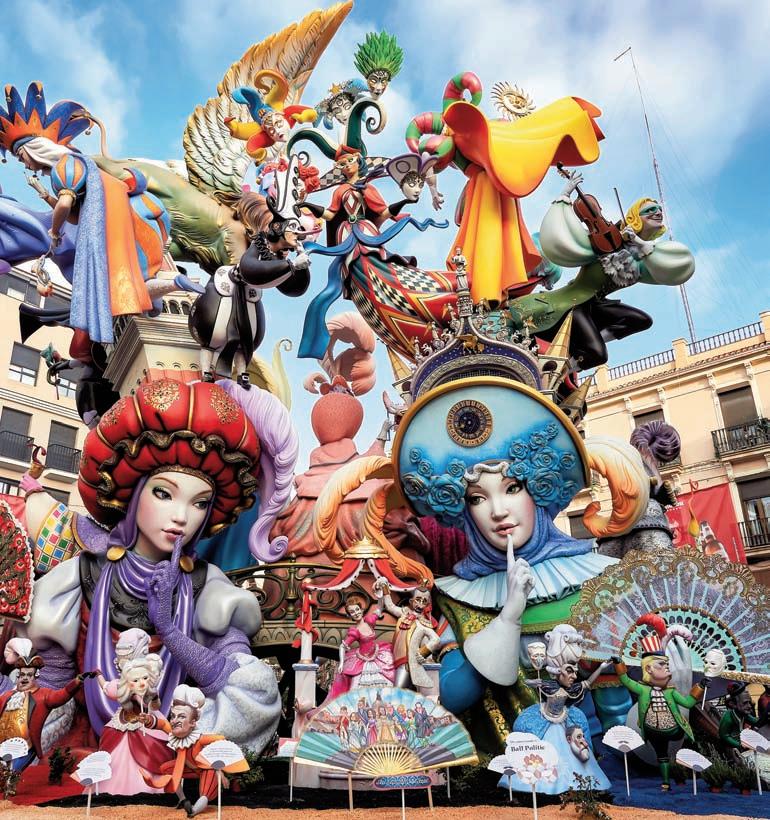
Aguas and view its dramatic, Rococo and Baroque façade. Inside the palace is the Gonzalez Marti National Museum of Ceramics. This is a double site, as you will be touring the highly stylized, and decorated interior of this grand palace dating back to the fifteenth century, and also viewing the extensive ceramics collection on the second floor. Valencia was a major player in the ceramics trade as early as the thirteenth century and the museum showcases important, and colorful, examples of early pieces from Valencia, Greece, the Roman Empire, and other parts of Spain, as well as contemporary pieces including artwork by Picasso.
A few blocks to the east is Plaza Patriarca and the Royal College Seminary of Corpus Christi founded in 1583 and built in the Spanish Renaissance-style. The Patriarca Museum houses a small art museum with iconic works by masters such as El Greco and Ribalta that you can view up close. The two-story gallery, with marble columns, is an elegant example of a Renaissance-style cloister. The large Flemish tapestries that grace the walls of the small chapel give it the feeling of a personal touch.
Heading in a northwest direction will eventually lead you to the Valencia Cathedral and the Plaza de la Virgen. You can choose which to see first, the plaza with its many cafés and stalls, and entertaining buskers, or the impressive cathedral that dominates the district. If you need a break, pick the plaza to get some refreshments,
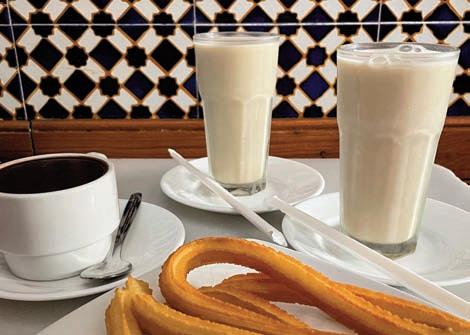
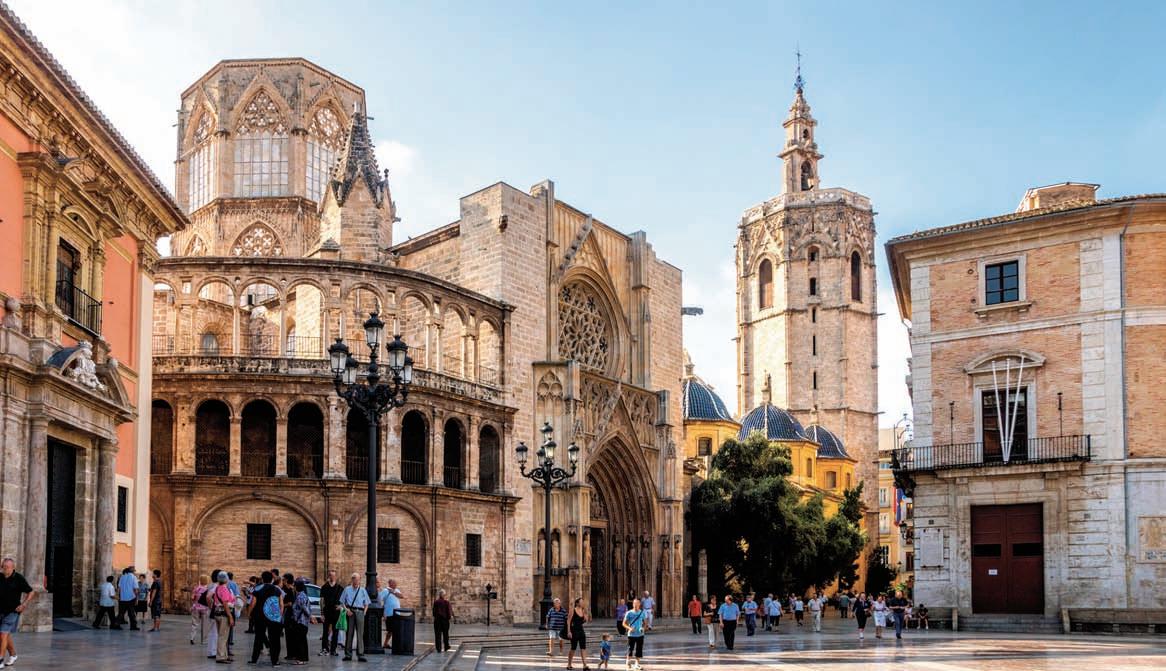
then take a seat and enjoy some peoplewatching time.
The cathedral, begun in 1262 and completed in 1482, is an architectural blend of Gothic, Romanesque, and Baroque styles. The interior is lined with altars, each in a distinctive style, with impressive frescoes that seem to float high above. The museum has several jeweled treasures, Goya paintings, and, most notably, in a chapel of its own, what is purported to be the legendary relic, the Holy Chalice from the last supper. (Valencia has a pretty strong claim to it.) To the Indiana Jones generation, that would be known as the Holy Grail.
Visitors are allowed to climb to the top of the Church’s Gothic, octagonal bell tower, El Micalet, built in the fourteenth century. Climbing the 207 steps to the top affords a good vantage point to view Valencia’s surrounding countryside, the huerta . Right time, right place—every Thursday at noon in the Plaza de la Virgen, you can witness the thousand-year-old tradition of the Tribunal de las Aguas as they adjudicate water rights for the countryside. Water flows through eight canals built two thousand years ago by the Moors, and is strictly controlled by the tribunal. The tribunal, acknowledged as the world’s oldest court, meets in front of the cathedral’s Apostle Gate entrance.




Just north of the cathedral, Torres de Serrans is one of two imposing fourteenth-century tower gates which were chosen as the remainder, and reminder, of the big, thick medieval wall that surrounded the original city. You can climb to the top of the Serrans Towers for great views of the city and the park, and now that the gates are permanently open, you can walk through the Serrans gate to the impressive riverbed parkland. The Old Town was built along the banks of the Turia River, but after devastating flooding in 1957 caused by the river overflowing its banks, the river was diverted, and the remaining riverbed was turned into a wonderful and well-appointed parkland, Jardin del Turia. Nearly twenty bridges that crossed the old river remain, including one from the Middle Ages, and have been woven into the parkland design of orange groves, walking and cycling paths, lots of sports facilities, and play areas for kids.
Take a little time to wander southwest and get a feel for the maze-like streets of the district of El Carmen and make plans for an evening out in this entertainment and dining enclave. Remember, dinner starts at 9 p.m.,
The “Metropolitan CathedralBasilica of the Assumption of Our Lady of Valencia,” aka St. Mary’s or Valencia Cathedral and plaza (above top) are at the center of the religious complex surrounded by old Valencia. The elaborate interior of nearby Iglesia de San Nicolás (above) displays ceiling frescoes that are often referred to as Valencia’s Sistine Chapel.
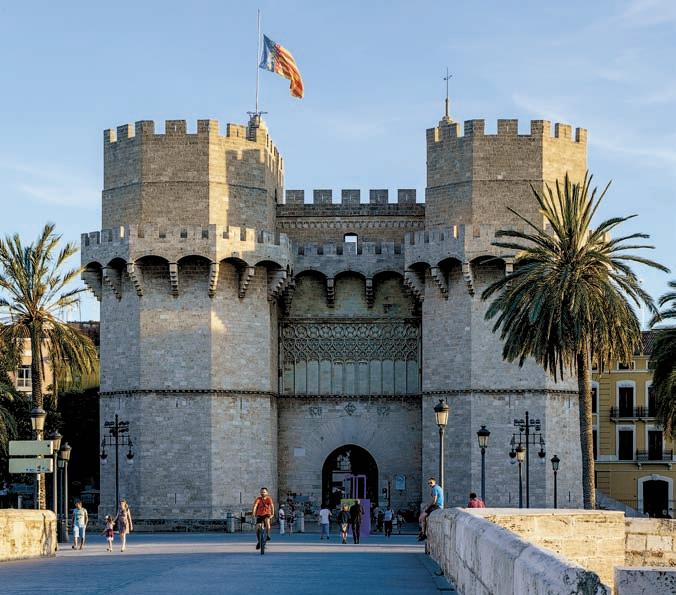

so you have time to return to your hotel and relax a bit before heading out again. This renowned district has very fine architectural detailing, narrow streets, and archways, including the Portal de la Valldigna, the ancient entrance to the Moorish quarter established after the Christians regained the city. Head south to find Plaza del Mercado and the Silk Exchange, directly across the street from the Mercado Central. The Lonja de la Seda (Silk Exchange), a World Heritage site, was the center of Valencia’s wealthy silk trade in the fifteenth-century. This Gothic-style building, topped with gargoyles, belies the airiness of the courtyard, with orange trees, behind the gates, and the high-ceilinged rooms inside.
Don’t miss walking through the Contracts Room to see the giant, spiral columns that fan out across the ceiling like stone trees.
A bonus—on some weekends, there is a collector’s flea market in the plaza out front.
Across the street is Mercado Central, one of the largest, and prettiest, covered markets in Europe. Vendor after vendor selling the most wonderful looking produce and good eats will make you salivate. Central Bar serves tapas and beverages, but save room for dinner later.
The market sells all the ingredients to make paella, a great dish to cook for a party. While some think of paella as a Spanish dish in general, the word and the dish originated in Valencia. When you get home from your trip to Valencia you’ll be inspired to invite a dozen or more friends over for a budgetfriendly paella-themed party.
Paella is actually the name of the pan, as well as the recipe. There is only one true version of paella in Valencia—the original meat-based dish with rabbit and chicken, but you will find plenty of seafood versions featuring shrimp in city restaurants also. There are hundreds of paella versions throughout Spain but the must-haves to call it paella are round-grained rice ( bomba ), saffron spice, beans, and your choice of a feature ingredient, all cooked in a shallow pan (paella) with broth to create a caramelized (socarrat) base. A fun way to taste and enjoy this delicious dish is to take a paella cooking class in the city taught by Valencians—there are many classes available, including sessions in residents’ homes.
Ready to party? Take a short flight, or ferry ride, to the Balearic island of Ibiza (Eivissa in Catalan). Colonized around 655 BC by the Carthaginian Empire, Ibiza has a long history of commerce with various occupiers all vying for the “white gold” derived from the salt flats, complemented by gentle har-
Serranos Towers, (above top) c. 1395,formed the main gate in the wall surrounding oldValencia. The Serranos Towers is open to the public and serves as the backdrop for the annual Fallas opening ceremony. Popular in Valencia, the espadrille (above) is a traditional Catalan footwear that gained worldwide popularity when Yves Saint Laurent included his version of the footwear in his 1970 fashion collection. The El Carmen district (right) comes alive at night with plenty of places to dine and enjoy a drink. Paella (opposite top) is traditionally cooked over an open wood fire. Locals shop the grand Mercado Central (opposite right) for paella ingredients and more.
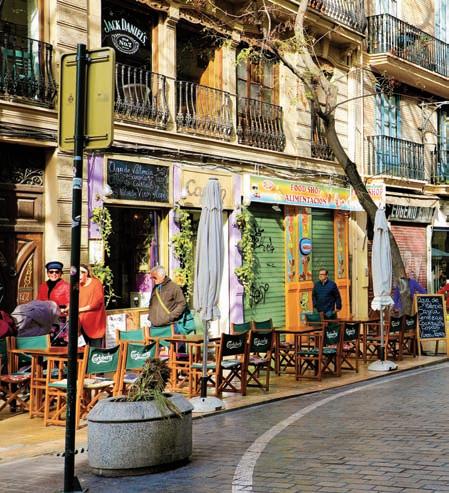
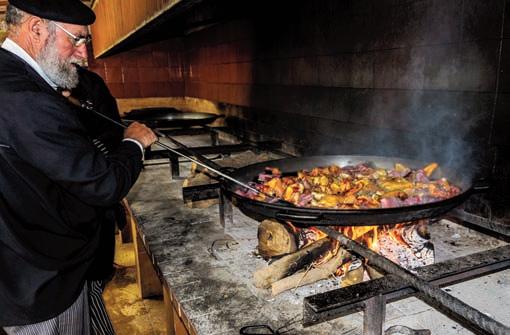
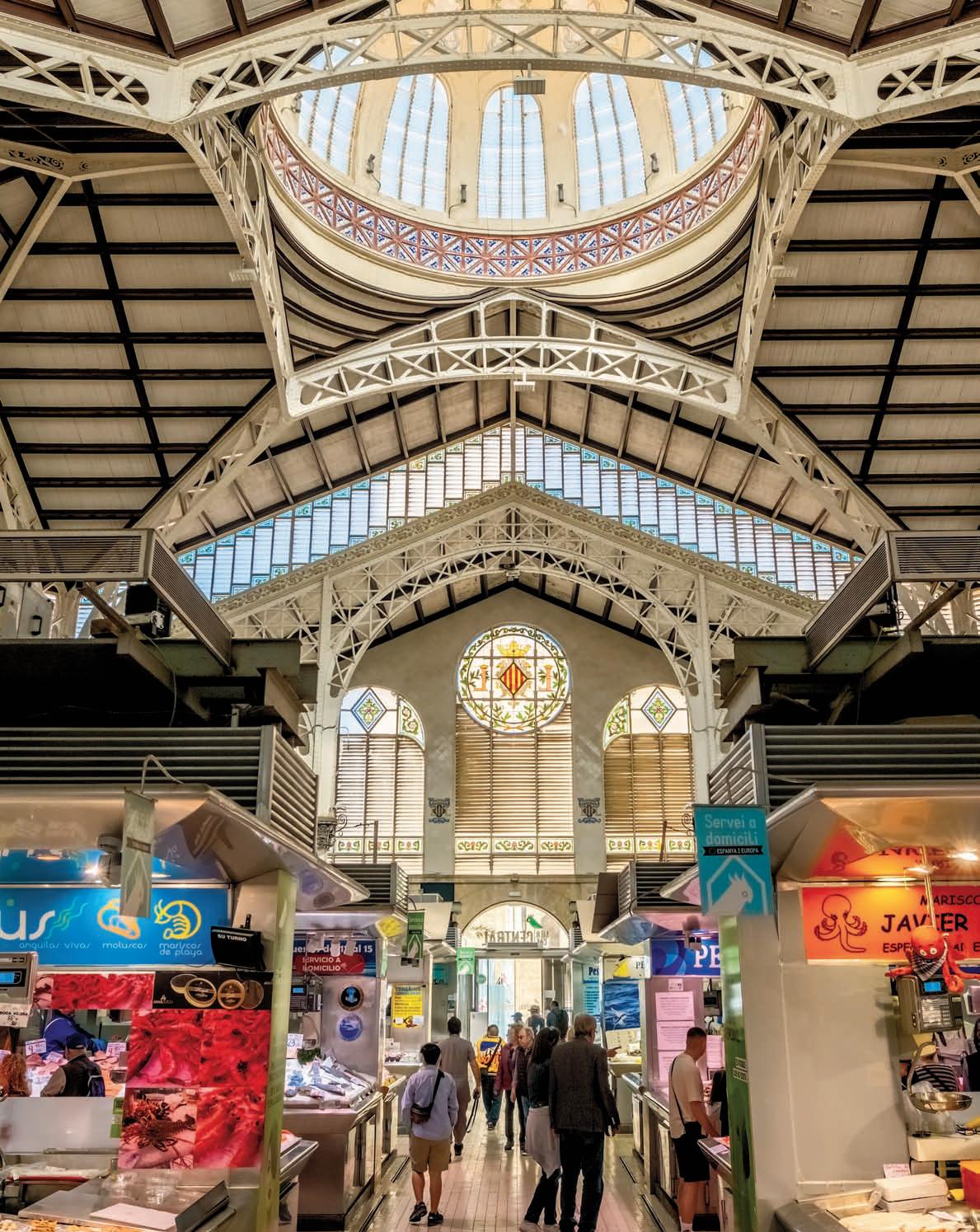
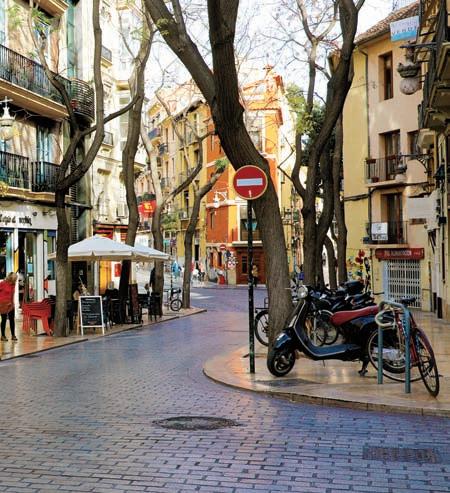
Deemed one of the Twelve Treasures of Spain, the astounding architectural project, the City of Arts and Sciences (right) houses multiple establishments including an open air aquarium, a science museum, a laserium, IMAX. and planetarium theater, and an opera house.The complex, completed in 2000, joins Bilbao’s Guggenheim Museum on the list of modern architectural destinations in Spain. Hosting the season finale for several years, Valencia’s Tormo track (right lower) is the place for MotoGP racing. The stands hold 150,000 spectators, all having a view of the entire track.
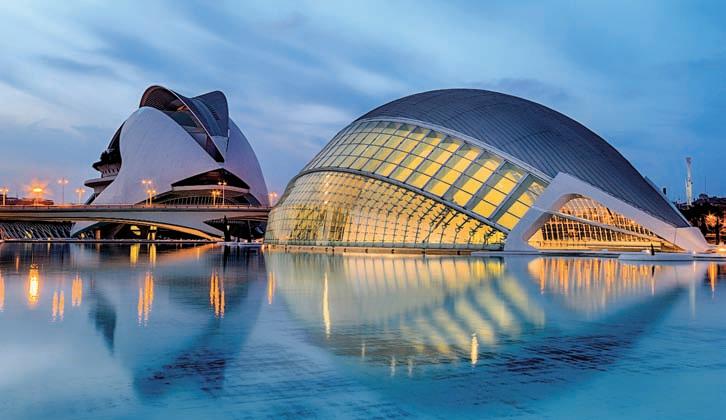
bors and a strategic location that coincided with major trade routes. Fast-forward to the 1960s-70s, with a change in the political winds, it was the “hippies’” turn to take over the island and the beautiful beaches. A short hop forward in time, as tourism continued to prosper, new life was infused into the island that eventually became known as the party capital of Europe.
Today, Ibiza hosts some of the most popular DJs and shows from around the

As a Chevron Auto Club member in good standing, you enjoy many valuable benefits. A benefit not to be overlooked is your option to enroll for additional insurance benefits. There is no medical application to fill out, no health questions to answer, and no physical exam required.
• Accident coverage anytime, anywhere, 24-hours-a-day, 365-days-a-year
• Coverage available for you and your eligible dependents
• Benefits paid regardless of other coverage
• No physical exam
world. There’s nighttime-clubbing at such venues as the original Pacha’s mega club, as well as daytime-clubbing at various venues around the island. (Popular DJs can draw enormous crowds that get packed in like sardines at some venues, so choose wisely— and buy tickets in advance for big names!) The two dozen clubs here do more than just play electronic music, they create a whole party atmosphere with light and sound shows, carnivalesque themes, cabaret entertainment, pool parties, VIP service areas, dinner parties, as well as ocean views. There’s also the Disco Bus to help you club-hop through the day and night.
Ibiza has a full compliment of touristfriendly accommodations and packaged adventures—from clubbing, archaeological sightseeing, boat cruises, beach hopping, and sunset watching, to familyfriendly activities (best between November to April when most clubs are closed). Stay a night or a week; this sun-soaked Mediterranean island offers a classic island get-away, with a twist.
Back on the mainland, it’s a good time to visit the ultra-modern, much photographed City of Arts and Science, Turia Park, Circuit Ricardo Tormo race track, and the beach scene.
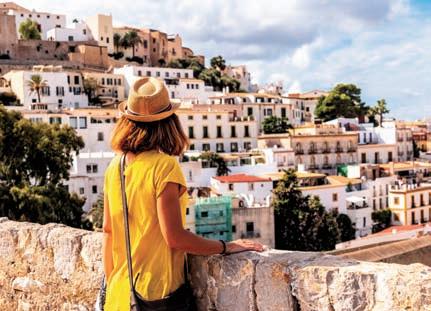
Valencia’s Tormo track, west of the city center, hosts the World Motorcycle Racing Championships for MotoGP, Moto2, and Moto3 every fall. Winter testing for Formula One, and Formula E have also taken advantage of this FIA Grade 1 track. The track is open year-round for a bevy of events. FIA Esports’ annual racing finals take place at the City of Arts and Sciences venue.
Center your beach activities around Las Arenas beach and El Cabanyal, an authentic fishing village. El Cabanyal, and Malvarrosa beach nearby, have some of the best tapas bars, bodegas, and paella restaurants found anywhere and are easy to get to with public transportation. This is not particularly a tourist zone, so bring your electronic translator to order food. A very colorful neighborhood, in more ways than one, El Cabanyal includes whole façades of buildings covered top to bottom in colorful ceramic tiles.
A week-long trip, enjoying all that Valencia and Ibiza have to offer, with smaller crowds and better pricing than Madrid or Barcelona, will keep you on top of your travel game.

The throbbing beat of electronic dance music (EDM), or a good band, flashing laser lights, artificial smoke, and sometimes confetti (above) fills the air of an Ibiza club. A young woman (left) views Ibiza Town from the Renaissance-era outer castle wall.
As with most European cities, you will find an abundance of public transportation including hop-on hop-off Bus Tours. Tickets to all attractions, and discount pricing for some, can be found at all tourist centers. The main tourist office is located at Ayuntemiento Plaza. The tourist office information can be viewed at www.visitvalencia.com/en
The Valencia Tourist Card includes museum entrance fees, public transportation, as well as discounts at restaurants, entertainment venues, shops, and car rental firms, and is good for 24, 48, or 72 hours, ranging in price from $15-$25. You can order products in advance via the official website and pick up at the airport.
If you stay in Valencia, where prices are lower than Madrid or Barcelona, you can book passage on high-speed trains that travel between Valencia and Barcelona or Madrid. Barcelona trains run every four hours and the trip takes about 3 hours and costs under $100.



Are



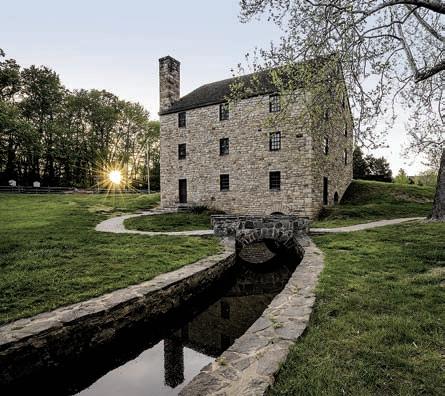
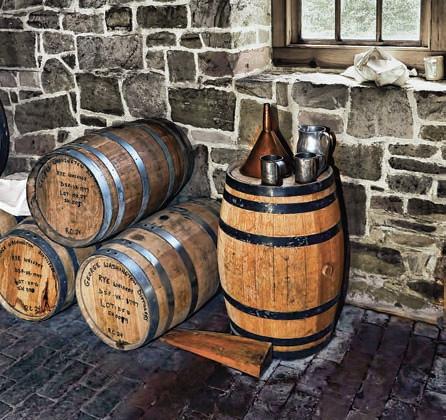
Our “curiosity tour” covers destinations across the country. More than a few of them are factory tours, but some of them are not. The list includes a big, working ranch, an early American history site, a famous old mine, a tract where cinema and TV magic is created, and a destination that answers the question, “How, when I press some keys on my laptop, does a selected item get to my doorstep in, often, less than 24 hours?” (You know where that one is going.) So why don’t we start there!
Amazon is not a factory, meaning Amazon does not make things. The Amazon business model combines merchandising, warehousing, and logistics, making available online a vast selection of items that, in most cases, are delivered to you from an Amazon fulfillment center (FC) using the Amazon delivery network. The company, founded in 1994 as an online bookseller, expanded rapidly, and now operates a network of FCs across the states and beyond our borders, and a fleet of thousands of delivery vehicles, some of them battery electric vehicles.
To tour an Amazon facility and learn how items seem to appear almost magically on your doorstep, visit www.amazontours.com/na for a list of the company’s distribution centers that offer tours. If in Seattle, visit the Amazon headquarters, a five-block downtown campus, where you can stop at any of 14 points of interest, and where you’ll see the twin bio-spheres, an expression of Amazon’s ongoing concern for our environment.
Facility tours are not just showcases of the latest and greatest commercial endeavors, as Amazon certainly is. We now step back in
by Cory Shelland


history for a tour that takes us to Mount Vernon, the Virginia plantation home of George Washington. Our first president is well known for many things, but whiskey-making is most certainly not at the top of the list. Still, for an up-close look at how whiskey was made at Mount Vernon, in very large quantities no less, a (weekends-only) visit to the reconstructed operation is a treat. A distillery visit will include also a look at the president’s working grist mill operation. Whiskey, cornmeal and wheat flour were important income-producing products to the Washington estate. The two adjacent buildings are a short drive from the main grounds. A Mount Vernon grounds pass will include entry to the distillery and mill, or a separate $10 entry fee will suffice. Rye whiskey and milled cornmeal are available for sale.
The likeness of the first president is stamped in large quantities not too far away at the U.S. Mint in Philadelphia. The minting of metal coins is an ancient process—with modern day refinements, of course. From the design and engraving of the coin stampers to the production and sorting of the final product, your tour of the U.S. Mint in Philadelphia is a survey of the complete process that creates the metal coins that ultimately weigh down our purses and pockets. From large rolls of sheet metal the mint produces billions of dollars of shiny discs delivered to the Federal Reserve Banks across the nation in bags weighing up to 2,000 pounds. But what about paper money?
Colonial Massachusetts issued paper money as early as 1692, but the birth of the nation required that the United States governmentto-be issue “federal” money. The printing and issuance of Continental
Photos opposite top:Amazon offers tours at any of 27 domestic fulfillment centers located in 19 states across the country. George Washington’s distillery and granary (opposite bottom) can be toured at Mount Vernon in Virginia. See money being made at the Philadelphia Mint and at printing operations in D.C. and Fort Worth, Texas.

bills, or “Continentals,” started in 1775. Today’s bills use a combination of lithography, engraving, and classic letterpress printing on substrates (“paper”) of linen and cotton using special inks, some of which are color-shifting.
From $1 bills to $100 notes, the Bureau of Engraving and Printing (BEP) designs and produces this country’s “paper” money at facilities in Washington, D.C. and in Fort Worth, Texas. You’ll find that a film starts your BEP experience with explanations of the various processes. The 45-minute tour lets you view from above the printing presses, the newest of which combine several operations in single massive machines. Impress your friends with a large sheet of uncut bills, available for purchase in the gift shop. Tours are free at the BEP print facilities.
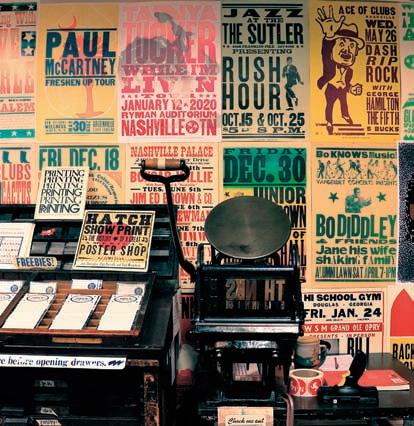
Hatch Show Print (above) in Nashville, Tennessee, is proud to keep the traditional letterpress print process alive and on display.The artisans at C.F. Martin and Company (top right) put the luthier’s art on view at the Martin factory in Nazareth, Pennsylvania. A likeness of Coca-Cola’s founder, Dr. John Pemberton, is displayed at the company’s World of Coca-Cola visitor center in Atlanta, Georgia.
For a closer look at traditional letterpress printing, a tour of Hatch Show Print in Nashville, Tennessee is the ticket. Gutenberg invented the process of letterpress printing with moveable type in 1455, but craft printers (and the BEP!) still use this process today. Based in “Music City,” Hatch, not surprisingly, produces posters for artists, bands, and shows, having done so for many of the music stars familiar to us all. Hatch started in 1879 cranking out advertising, and even business cards, and has continued the letterpress tradition right up to the present as it now operates as a part of the Country Music Hall of Fame and Museum. The colorful tour within the print shop is $22; a reservation is required for the tour.
A visit to the C. F. Martin and Company guitar factory in Nazareth, Pennsylvania continues the music theme, where the pursuit of musical magic incorporates wood artistry on a large scale. Founded in 1833, family-owned Martin Guitars moved to Nazareth in 1850, establishing itself as solidly among the world’s top premium acoustic guitar makers. A Martin tour offers visitors a view of all phases of their guitar-making process and includes a visit to their museum featuring guitars and memorabilia that showcase the company’s rich history. There’s even

a special room where you can sit down and play a Martin guitar. The one-hour tour is $5; online registration is required.
If the Martin acoustic guitar has attained iconic status among musicians worldwide, then most assuredly Coca-Cola has earned iconic status as the world’s best known—and most consumed—soft drink. Emerging from the nineteenth-century world of dubious elixirs, Coca-Cola rose above the crowd thanks to the creative efforts of pharmacist Dr. John Pemberton. The fascinating story of Coca-Cola plays out at the World of CocaCola in Atlanta, Georgia. A visit will include viewing a bottling line, scaled down and slowed down for the benefit of viewers, along with tour segments featuring the lab, the “secret recipe” vault, and exhibits of Coke’s packaging and marketing history, topped off with an opportunity to acquire Coke-branded goodies to take home.
Chemistry played a big role in the creation and success of Coca-Cola, but for a very special look into the world of physics, a tour of the FermiLab just outside of Chicago might be in order. Special registration is
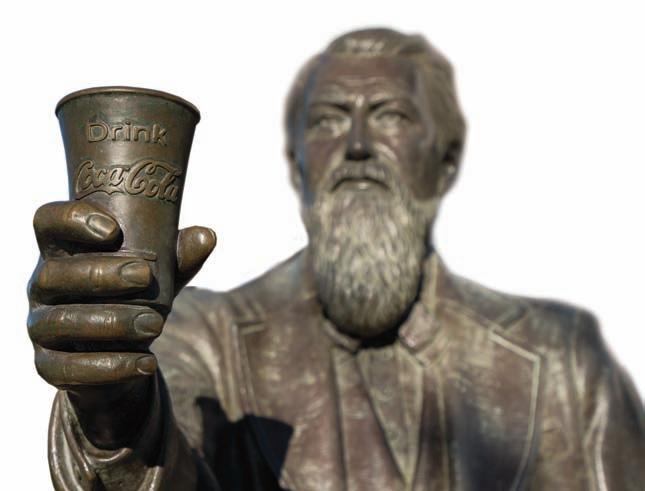
“When you’re curious you find lots of interesting things to do.”
—Walt Disney

required for the monthly tour date, but how often does one get to see particle physicists up close seeking answers to the mysteries of our universe? Fermilab fetes visitors with more than just science. The lab is sited in a 6,800-acre nature preserve where trails take visitors past bison and other prairie animals. The campus also houses a museum and an art gallery where noted artists show their works. The 847-seat Ramsey Auditorium in Wilson Hall hosts the ongoing Arts and Lecture Series events.
Lawrence Livermore National Laboratory, just east of San Francisco, is another destination offering a look into the world of high-level physics. The lab conducts work aimed at keeping the U.S. at the leading edge of atomic technology in all spheres. Whether or not you submit to the security check and take a tour of the grounds, a visit to the Discovery Center is outstanding— especially for young folks curious about cool things like lasers, the power of the atom (explosive and otherwise), the environment, and energy.The interactive exhibits are engaging.
Edward Teller, of Manhattan Project fame, was instrumental in preparing the first atomic detonation, on the sands of New Mexico in 1945, the site of our next tour. Located within the bounds of the White Sands Missile Range, an obelisk at the Trinity Site marks the location of the 100-foot tower on which that first atomic detonation occurred 79 years ago. Tours to the barren (but not dangerously radioactive) site are conducted twice a year. In 2025 the dates are April 3rd and October 18th. The newly renovated White Sands Missile Range Museum, however, will suffice if you cannot make one of the Trinity Site tours. View the exhibits inside the museum, then, outside, wander Missile Park amid a collection of missiles large and small. A progenitor German V-2 rocket is on display in its own building.
A jaunt through the Upper Midwest affords the opportunity to join tours at several notable establishments. Starting north of Milwaukee at Kohler, Wisconsin, near Sheboygan, watch the process unfold at the Kohler Design Center that yields the shiny porcelain fixtures we
encounter and use every day. From the foundry, to the enameling unit, to pottery areas, the whole elaborate process is on view. The free tours begin at 8:15 a.m. and cover 2½ miles. Pre-registration is required Additional Kohler tours can be taken at the American Club and at the Kohler-family Waelderhaus, also in Kohler. The tours combined with some time wandering the Kohler Village with its shops and restaurants makes a visit informative and extra enjoyable.

Polaris is a well-known manufacturer of snowmobiles, off-road 4x4 vehicles, Indian motorcycles, and as of 2018, pontoon-style watercraft. Snowmobilers and off-road racers around the world know the magic of the Polaris machines. Since Polaris has over ten manufacturing and assembly facilities, it is worth zeroing in on the home operation at Roseau, Minnesota—where it all started. Located adjacent to the company’s main factory, the Polaris Experience Center houses displays documenting Polaris’s 65-year history. Snowmobiles and 4x4s are produced at the Roseau plant. Indian motorcycles and the Slingshot 3-wheeler are produced at the Spirit Lake, Iowa facility. You might be surprised to learn that Polaris is a big supplier to the military and governmental agencies.
While in the upper Midwest, a visit to the Case IH Tractors facility in Racine, Wisconsin, will impress. From its beginnings in 1842 in Racine, Case made its name first as the world’s largest manufacturer of steam engines, and more recently with all-wheel drive tractors and farm equipment—from small utility tractors to huge combines towering 13 feet and weighing 21 tons. Take a milelong stroll to view the assembly of the big red machines at any of several Case plants. Informative Case IH Experience Centers are located in Racine, Wisconsin and Fargo, North Dakota. Along with surveying historical examples of Case farm equipment, you can

The Case IH Steiger tractor (above top) features the Quadtrac system in place of wheels and tires. Steigers are built at the Case IH facility at Fargo, North Dakota. A variety of missiles is displayed (above) at the outdoor Missile Park, part of the White Sands Missile Range Museum.

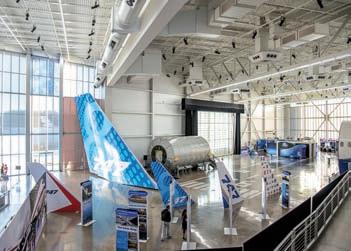
The fascinating process of assembling jetliners (above) can be viewed at Boeing’s Everett, Washington, facility. The important Santa Gertrudis breed (below) is the result of early twentieth-century bioengineering at the King Ranch at Kingsville, Texas.A robo dog (right) is on display at the Computer History Museum in California’s Silicon Valley.
view the production of the equipment and even leave with one for yourself—shelf-sized, of course! Or maybe a hat will do. Learn about the latest farming technology, such as AFS (Advanced Farming Systems) employed on some Case IH equipment. The Magnum series tractors are produced at Racine, but if combines are your thing, visit the Grand Island, Nebraska Case IH facility. And if in Fargo, North Dakota, visit the Case IH-Steiger plant that produces large tire- and track-drive tractors.
Boeing has, at their Everett operation in Washington state, a gigantic indoor manufacturing building—maybe not surprising since they make very, very large things. Several tour experiences are available at Boeing’s “Future of Flight” at the Everett facility. A general admission ticket affords access to the Skydeck and the Gallery. From the outdoor Skydeck you will view the activity at Paine Field, where Boeing aircraft arrive and depart. Inside you’ll spend time in the Gallery for a look at Boeing’s future products and the Legacy of Innovation exhibits featuring Boeing’s history. The separate Factory Tour ticket includes the above, plus an 80-minute tour of the huge factory where the aircraft are meticulously assembled.

Though it is not specifically a tour, a day spent in Silicon Valley can be a day spent face-to-face with high tech innovations—close to the beating heart, some would say, of our new tech world. There are plenty of places to visit to check out the latest musthave tech devices, plus a few places of historical significance such as the Apple founders’ modest house and the one-car garage where Hewlett and Packard spawned HP. Can you look
through glass into a clean room where chips are being assembled? No, but you can, at the Apple Park Visitor Centre (across the street from the enormous circular Apple “spaceship” building) tour the Apple headquarters virtually—and interactively—on a provided iPad. A visit to the Computer History Museum will bring back memories for adults, while dropping in to the Tech Museum of Innovation is an absolute must, especially for kids. Make your own way around Silicon Valley or sign up with one of several companies that offer tours—not a bad idea since you’ll get the sights along with an informative narrative. A visit to ritzy Santana Row will give you a taste of how the rich and techie live—or at least where they shop.
If Silicon Valley has proven itself an incubator of high technology, then a look next at a traditional ranching operation might be refreshing. With a history rooted in the soil of south Texas, and the literal birthplace of the groundbreaking Santa Gertrudis bovine breed, the King Ranch exemplifies an enterprise that helped to build and sustain a growing country—as it still does. Founded in 1853 on 15,500 acres of ranch land (acquired for a price of $300), the ranch grew to over a million acres in later years. It presently is 825,000 acres. The colorful history of the

country’s largest ranch is presented at the King Ranch Museum in Kingsville. Combining a museum visit with a jaunt to the main ranch complex just outside town for a tour yields an immersive look into the ranch operation that explains everything from the presence of quarter horses, to the Kineños’s Colony, to the lookout tower, to the machinery for clearing invasive brush from the grazing land. Reserve a tour spot at www.king-ranch.com/visit/tours/daily-ranch-tours Another Western enterprise with a deep
history is located about a 2-day drive west of the King Ranch at Bisbee, in southernmost Arizona. Mining, not agriculture, is the draw at Bisbee, where the Copper Queen Mine hosts visitors on a one-hour tour of what was regarded as the richest copper mine in Arizona, and possibly the U.S. The original claim was filed in 1877 based on the findings of an Army lieutenant scouting in the area. Excavations revealed that the ore in the area had a 23% copper content—an extraordinarily high percentage. Mining eventually was carried out at eight levels with the lowest level nearly 1,000 feet below ground. The Phelps Dodge company conducted the majority of the mining over the years, closing the mine in 1976. Local residents with assistance later from the U.S. Economic Development Agency established the Copper Queen Mine Tour after clearing a route and adding safety measures.
The King Ranch in Texas and Arizona’s Copper Queen Mine are colorful chapters in the history of the West. But many more chapters can be attributed to the goings on within the walls of the fabled Paramount
Studios, a bit farther west on our tour—though the Paramount chapters admittedly carry much more fiction than historical fact! The operations at Paramount date back to the beginnings of cinema when several early film companies merged, moving out of a converted barn studio in Hollywood in 1926 and onto the Melrose Avenue property. Traverse “streets” that you’ll recognize (with the help of your guide) and see how and where the magic happens. No, it’s not really New York or Chicago you’re seeing on film! Movies you’ll recognize were filmed on the lot as well as TV shows such as “Cheers,” which, while filmed in Hollywood, made popular an actual bar—in Boston! The popular Paramount Pictures tour is pure Hollywood from start to finish. And finish we do, as we put a wrap on this tour of some popular tours across the nation. There are many tours to take, local to you, or further afield. We hope this selection has whetted your appetite for one or more!
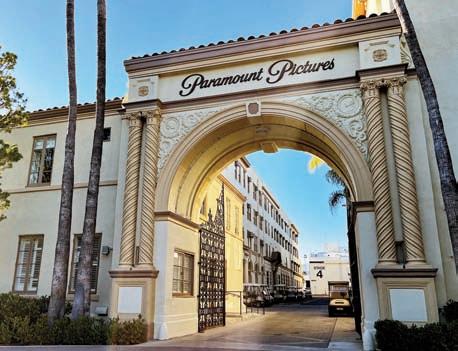
Paramount claims that you’ll leave the Paramount Pictures Studio Tour“a true industry insider.” In any case you will witness the elaborate goings-on that put those perfect pictures (and sounds) on our TVs and in our theaters.
Visitor tour itineraries, times, prices, and dates are subject to change.You are advised to check with facilities as part of your trip planning.
Amazon. Offers tours at 27 fulfillment centers across the country. www.amazontours.com/na/onsite.
Mount Vernon, Virginia. 703/780-2000, www.mountvernon.org/the-estate-gardens/ distillery-gristmill.
Philadelphia Mint, www.usmint.gov/about/minttours-facilities/philadelphia/tour-information. For complete tour information, call 215-408-0112.
BEP D.C. www.bep.gov/visitor-centers/washingtondc-tour-and-visitor-center/tour.
BEP Fort Worth, TX www.bep.gov/visitorcenters/fort-worth-tx-tour-and-visitor-center Hatch Show Print, Nashville, TN. 615/577-7710, www.hatchshowprint.com/visit.
C. F. Martin & Company, Nazareth, PA. www.martinguitar.com/visit-us.html.
World of Coca-Cola, Atlanta, GA. www.worldofcoca-cola.com.
Fermilab, Batavia, IL https://events.fnal.gov/tours/ Lawrence Livermore National Lab Discovery Center, Livermore, CA. www.llnl.gov/community-education/discovery-center
Silicon Valley, CA https://visitsiliconvalley.org/ silicon-valley-things-to-see-and-do. White Sands Missile Range Museum and Trinity Site https://wsmrmuseum.com, select the “Visit” tab for information specific to visiting the museum and the Trinity Site. Kohler, Kohler, WI. 920/457-3699, www.kohlerwisconsin.com/explore-more/activitiesand-events/tours.
Polaris, Roseau, MN. 218/463-4999, www.polaris.com/en-us/polaris-experience-center. Case IH, various locations. 877/422-7344, www.caseih.com/en-us/unitedstates/connect-withus/plant-tours
Boeing, Everett, WA. 800/464-1476, www.boeingfutureofflight.com/tour.
King Ranch, Kingsville, TX. 361/592-8055, https://king-ranch.com/visit.
Copper Queen Mine, Bisbee, AZ. 520/432-2071, www.copperqueenmine.com
Paramount Pictures, Hollywood, CA. 323/956-1777, www.paramountstudiotour.com/studio-tours.html.
by
Duncan Dick. DK Publishing, New York, NY, 2022. 240 pages, hardcover, full color, $30. ISBN 978-07440-6394-3

Concerts, clubs, festivals, DJs, record stores (love that vinyl, right?)—the global music and dance scene is big, and it’s growing. Music-based events are reason enough for many young folks to plan a vacation, traveling to a distant city or even going international and flying abroad for a vibrant music experience.
Live concerts and big music events are great on your A/V system, but sometimes you just have to get up and go to the real thing. And this book is a great resourcefor planning your excursion. You may already know exactly where you would go and it likely is covered in this book. If your mind is open to suggestions, this book covers a wide range of possibilities.
You’ve noticed that the videos you watch are shot at locations all over the world. You won’t get to many of those places, but you can further immerse yourself in the global music-dance culture in the pages of this book. Events and venues are categorized first by continent and are further broken down by city, with notes on the local music scene—the clubs, the events, the producers, DJs, artists, and even listings for local record stores. If you’re into clubbing, concerts, EDM, house, whatever—you’ll enjoy this tome.
by Ted Simon. Jupitalia Productions, Covelo, CA, 1996. 448 pages, softcover, b/w illustrations, $24.95. ISBN 978-0-9654785-2-6
One Saturday morning I noticed a gaggle of characters assembled in the parking lot of a motorcycle dealer in
my neighborhood. A half-dozen or so motorcyclists were standing, chatting, among their distinctive bikes. Curious, I hovered about until I knew a bit more about what was going on. They were adventure bike riders—ADVers, for short, and were about to depart on a group ride far into the area’s back hills, overnighting at a campground. The loaded-up bikes had large squarish saddle bags (panniers) with additional camping equipment strapped on. The riders were decked out in fancy allweather jackets and pants with patches of hi-viz yellow here and there. Adventure biking as a hobby, I have come to learn, is quite a big thing. In fact, the Adventure Rider Radio podcast is the most listened-to motorcycle podcast in the world. Gatherings of ADV riders around the world attract thousands of attendees.
There are many who say the ADV phenomenon started with one man, one motorcycle trip, and one book, originally published in 1979. The young man, journalist Ted Simon, set off from the London Times office in 1973 (on a newly acquired 500cc motorcycle) to see the world and document what he saw and experienced. Jupiter’s Travels is not about motorcycling per se. It is about the ground-level observations and adventures of a 78,000-mile trip (over a 4-year span) to nearly all parts of the world. It has inspired many to do the same. Mr. Simon is an excellent writer whose colorful journey, and discoveries
about himself and others, has kept readers entertained for years and inspired many a traveler.
by Mark Hewitt
and Nancy
Sweezy.
Published for the North Carolina Museum of Art by the University of North Carolina Press, Chapel Hill, NC, 2005. 274 pages, hardcover, full color, $20. ISBN 978-0-8078-2992-9 North Carolina is well known for its furniture-making tradition and for crafts, folk art, and pottery. English and German potters brought their expertise from Europe to New England in the eighteenth century and by the mid-nineteenth century those pottery techniques, such as the alkaline glaze and the saltglaze, were being employed by potters in North Carolina. The aesthetic roots of North Carolina pottery reach back in time, to many parts of the world, including China, Japan, and Korea, incorporating also Native American and European influences.
The Potter’s Eye documents a collection of pottery assembled by the North Carolina Museum of Art that illuminates the state’s pottery tradition, including its historical roots. This beautiful large-format book provides for a deeper understanding and appreciation of this distinctive pottery and is a treasure for anyone inclined to acquire a piece—or start a collection. While in North Carolina, making a visit to a pottery store or gallery can be an interesting experience for a reader.
Author Mark Hewitt is an established potter whose work can be found for sale at https://hewittpotterystore.com.The Owen family of potters traces its ancestry back to New England. The current generation produces handmade North Carolina pottery in forms both traditional and contemporary.View their work online at: https://store.benowenpottery.com




















FOR ALL FUEL DISCOUNTS: Purchases subject to credit approval. See the Fuel Discounts Program Terms for details at chevrontexacocards.com/Chevron/fuel-credits/. Synchrony Bank has the right to change or terminate any promotional offers. Fuel Discounts, including introductory, ongoing base and limited time offers earned from Chevron and Texaco fuel purchases, accrue during your billing period and, depending on dispenser capability at the station, will be applied either as (a) a cents-per-gallon discount at the pump (which may be referred to as Instant Fuel Discounts) or (b) a statement credit to the balance on your account at the end of the billing period in which they are earned. Visa Spend Fuel Discounts earned from qualifying purchases made outside of fuel merchants will be applied as a statement credit.
*To create a User Account you must be at least 16 years of age, a resident of the US, have a mobile phone number and valid e-mail address. Rewards are redeemed for discounts on qualifying fuel purchases at participating stations. Allow up to 72 hours for points to appear in your User Account after earning and a maximum of 25 gallons with one vehicle per transaction. Other restrictions apply. For more information, please see the Chevron app or visit ChevronTexacoRewards.com.
CHEVRON, TEXACO, the respective Logos and REWARDS Lockups, and Checking Pay are
The Techron Advantage Cards are issued by Synchrony Bank and are not an obligation of
VISA is a registered trademark of Visa International Service Association and used under license.
CHEVRON, TEXACO, their respective Logos, TECHRON and the












